Seilerstaette
MULTIMODAL GOOGLIFICATION OF COSMOLOGY-ORIENTED DIAGRAMMATIC EXPERIMENTATIONS OF STANO FILKO
Stano Filko
curated by Boris Ondreicka
May 3 – June 6, 2019
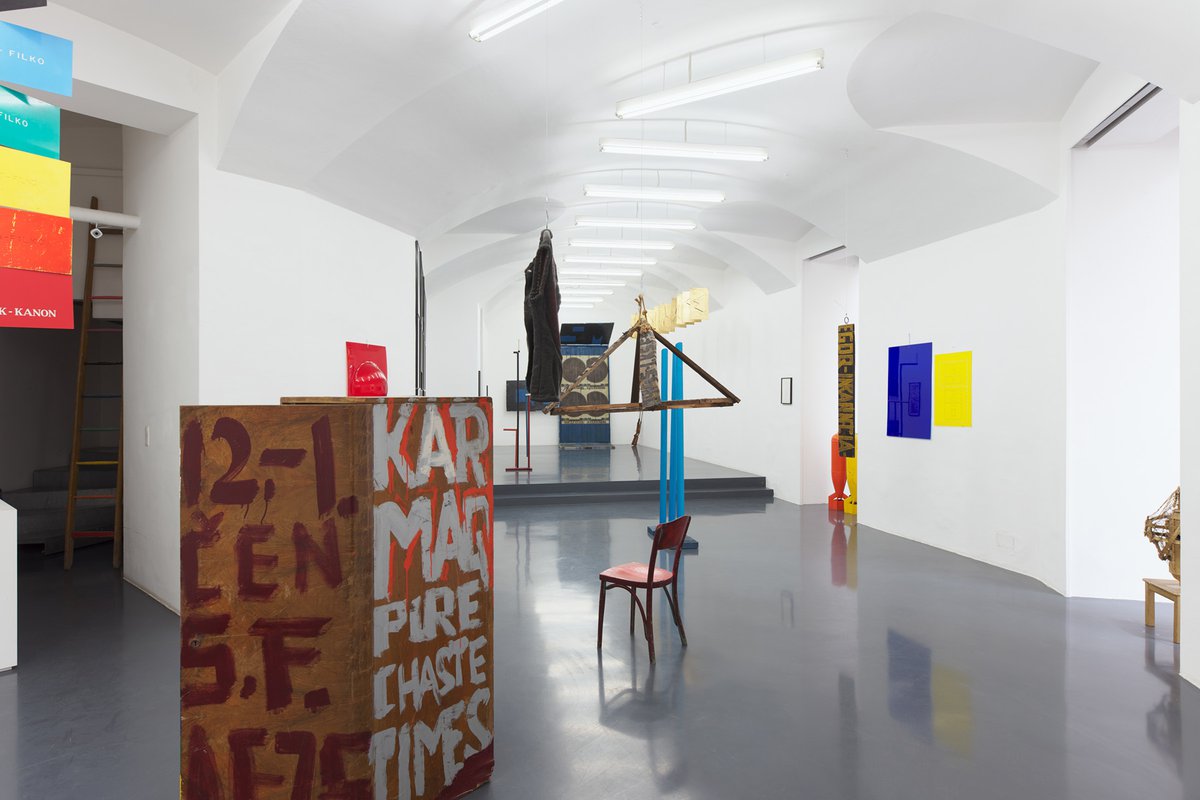
Stano Filko
MULTIMODAL GOOGLIFICATION OF COSMOLOGY-ORIENTED DIAGRAMMATIC EXPERIMENTATIONS OF STANO FILKO, 2019
Installation view
Layr Seilerstaette, Vienna
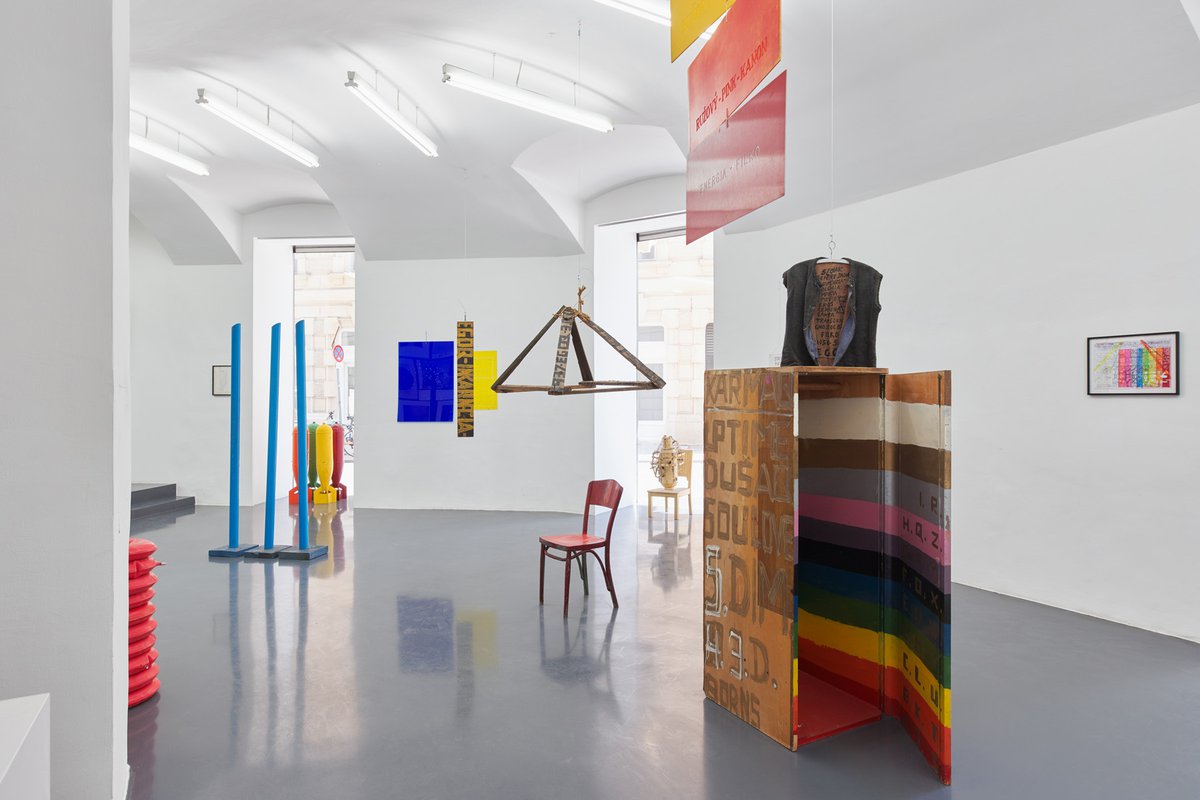
Stano Filko
MULTIMODAL GOOGLIFICATION OF COSMOLOGY-ORIENTED DIAGRAMMATIC EXPERIMENTATIONS OF STANO FILKO, 2019
Installation view
Layr Seilerstaette, Vienna
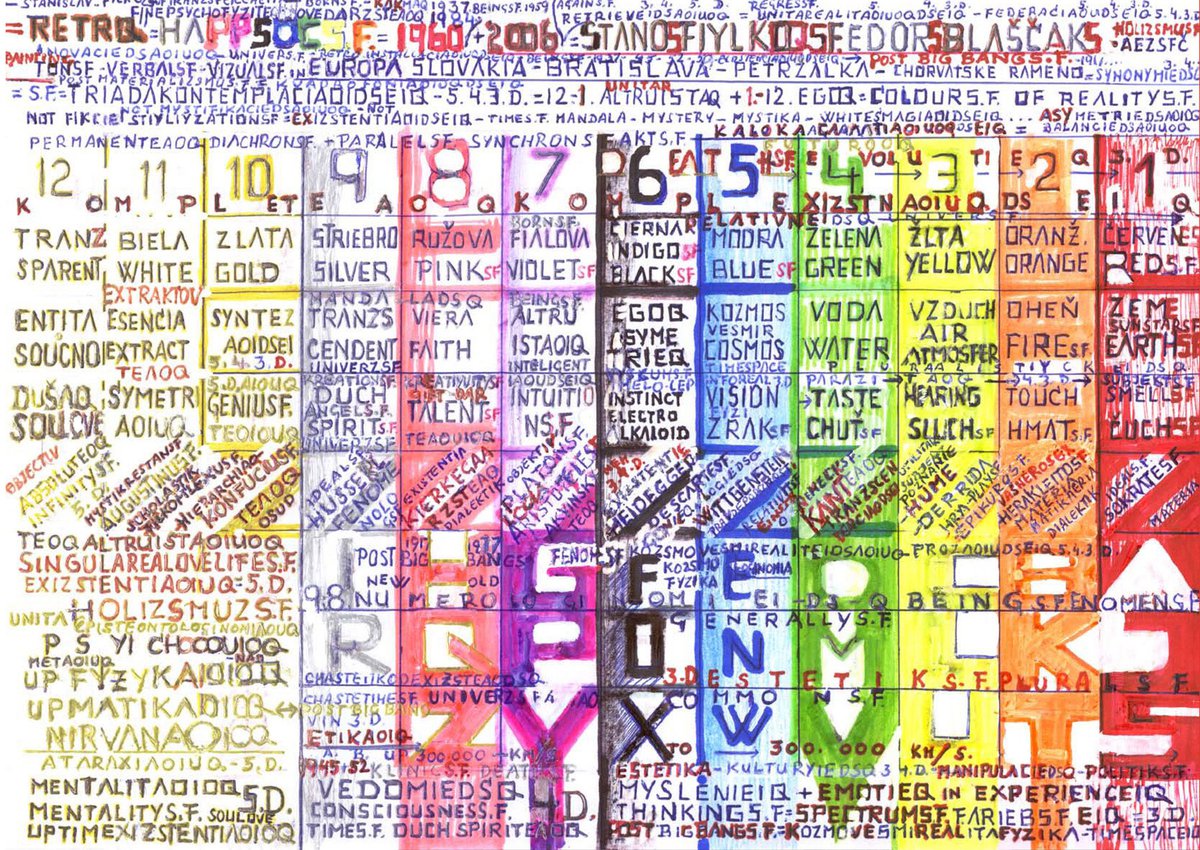
Stano Filko
Kosmologie (Poster), 2006
Offset print on paper
83 × 59 cm
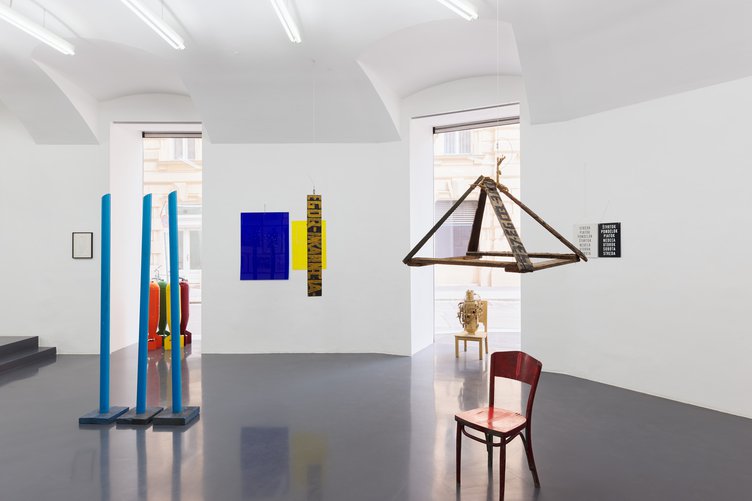
Stano Filko
MULTIMODAL GOOGLIFICATION OF COSMOLOGY-ORIENTED DIAGRAMMATIC EXPERIMENTATIONS OF STANO FILKO, 2019
Installation view
Layr Seilerstaette, Vienna
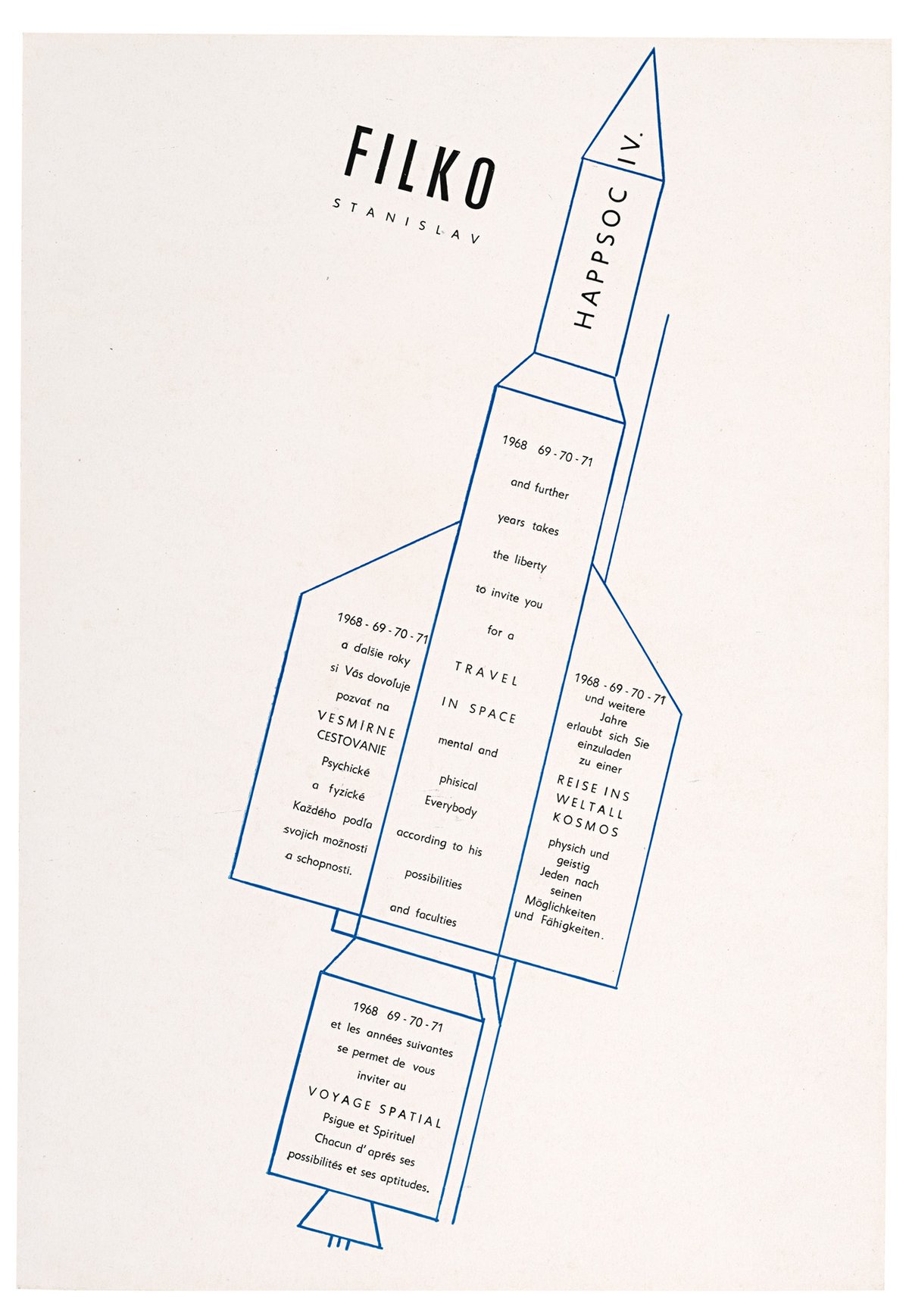
Stano Filko
HAPPSOC IV., Travel in Space, 1967
Serigraphy on paper
30.5 × 21 cm
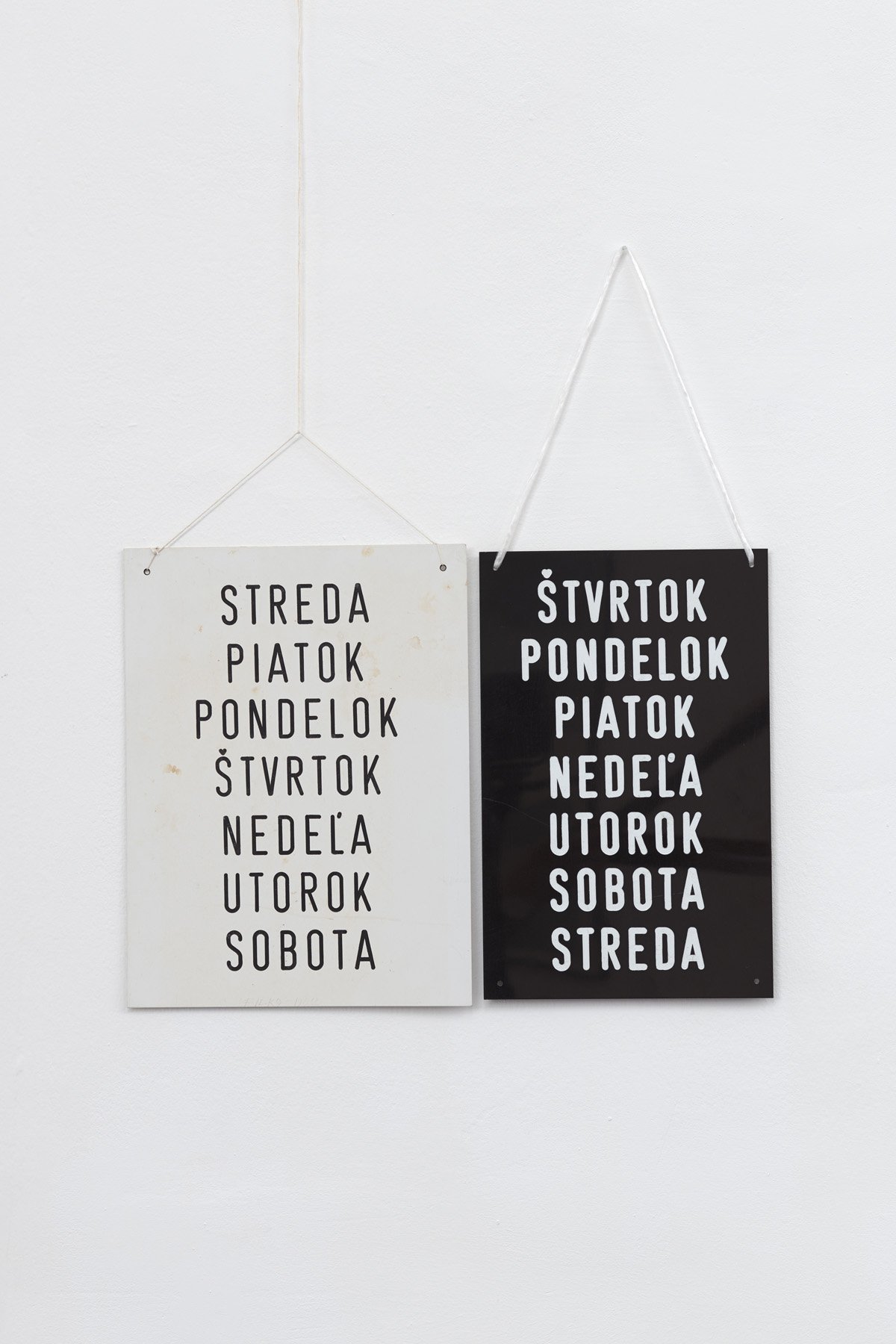
(left)
Stano Filko
WEDNESDAY - FRIDAY - MONDAY…, ca. 1995
Engraving on PVC
40 × 30 cm
(right)
Stano Filko
THURSDAY - MONDAY - FRIDAY…, ca. 1995
Engraving on PVC
40 × 30 cm
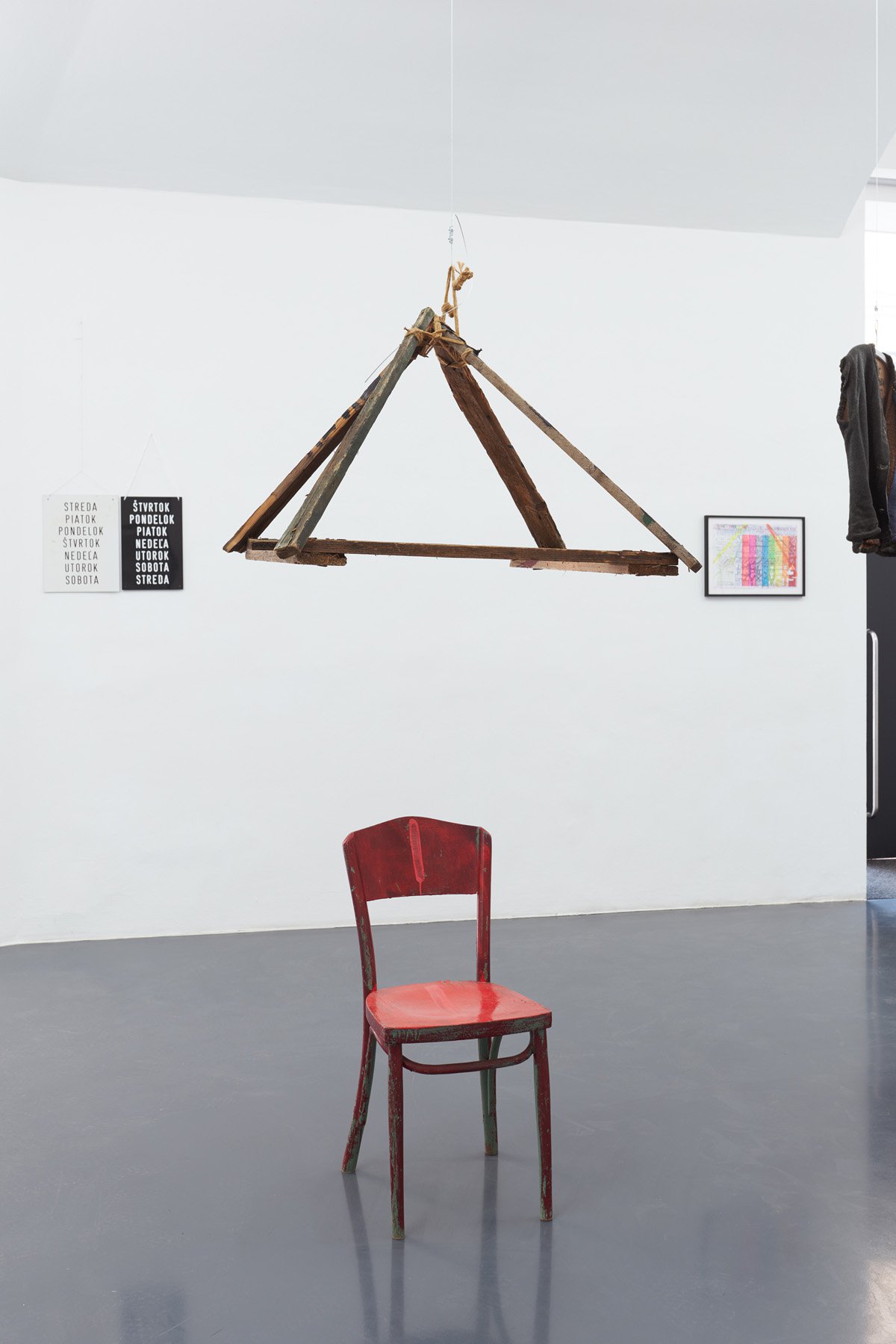
Stano Filko
Self-Portrait S.F.VAKUUM, 3.4.5.D., 2007
Wood, acrylic, mixed media
Dimensions variable
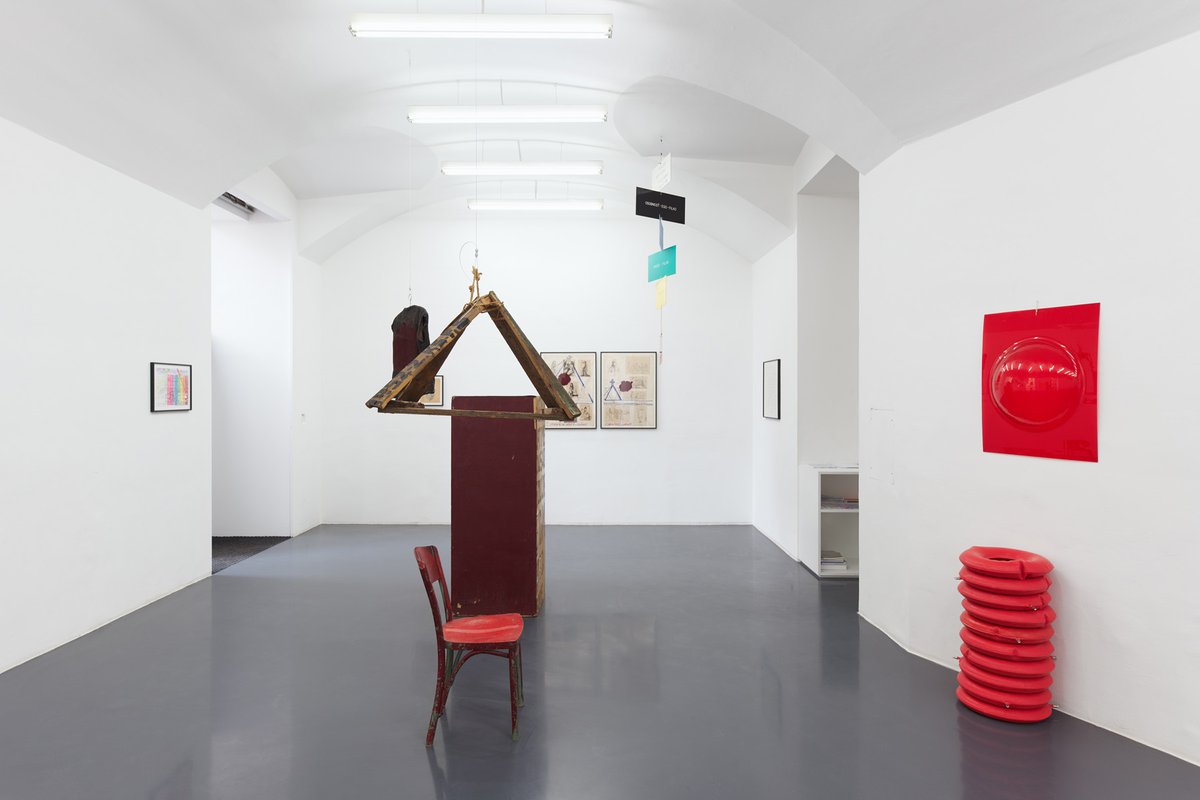
Stano Filko
MULTIMODAL GOOGLIFICATION OF COSMOLOGY-ORIENTED DIAGRAMMATIC EXPERIMENTATIONS OF STANO FILKO, 2019
Installation view
Layr Seilerstaette, Vienna
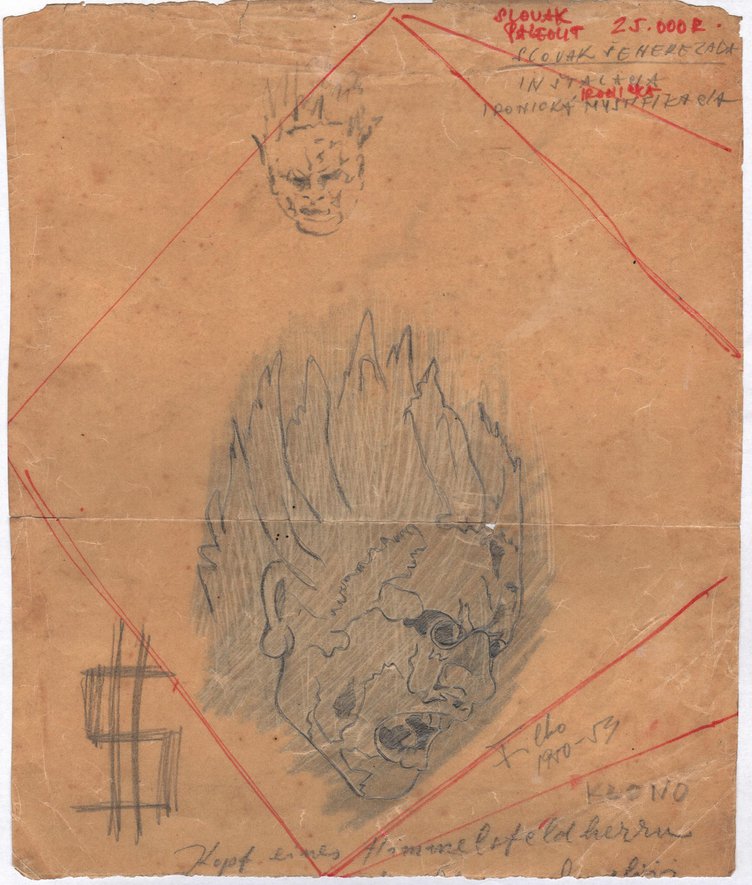
Stano Filko
Kopf eines Himmelsfeldherrn, ca. 1959-1995
Pencil, felt-tip pen on paper
29 × 24 cm
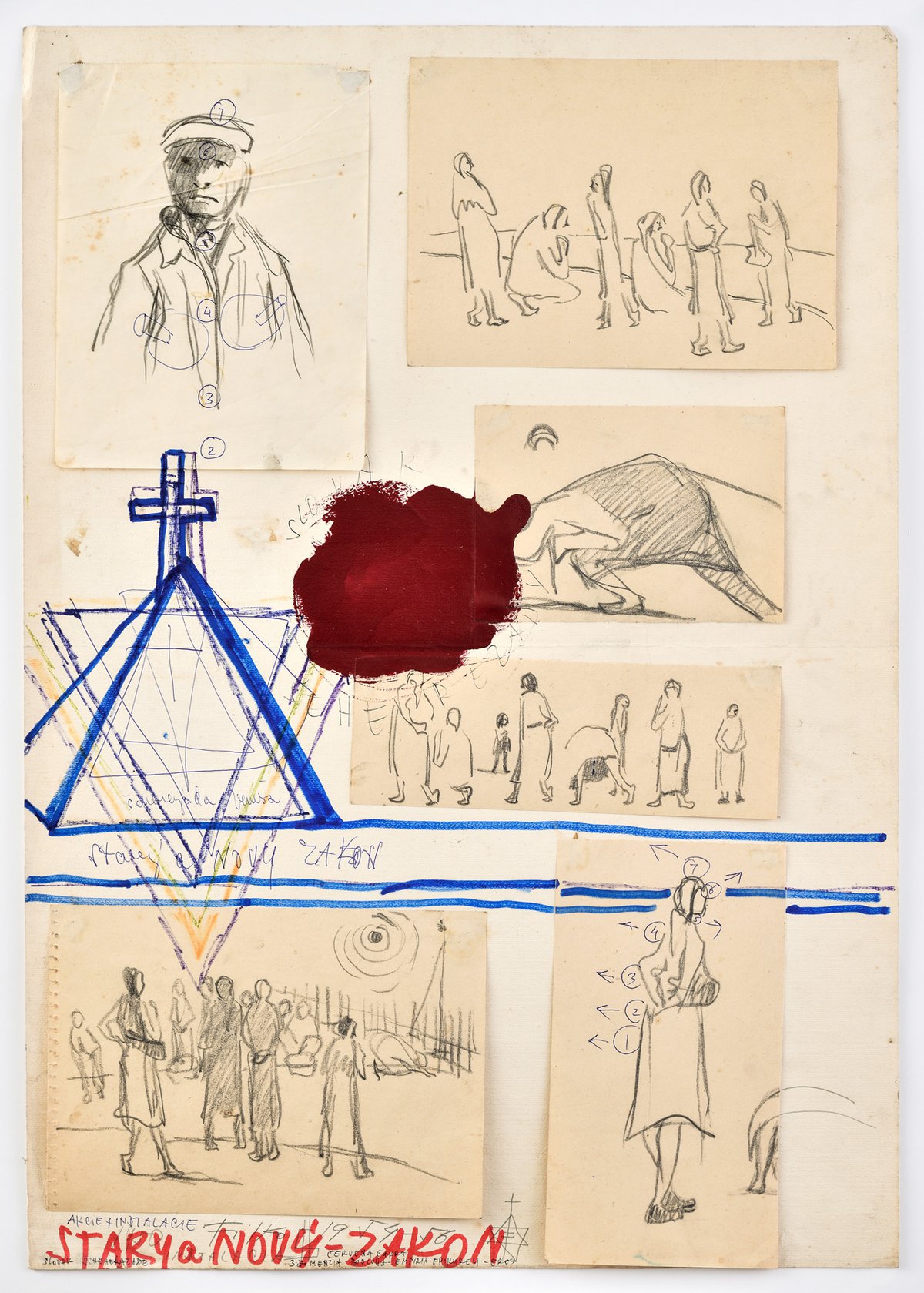
Stano Filko
From the cycle Old and New Testament
Collage, painting, felt-tip pen, pencil on paper
84.5 × 59.5 cm
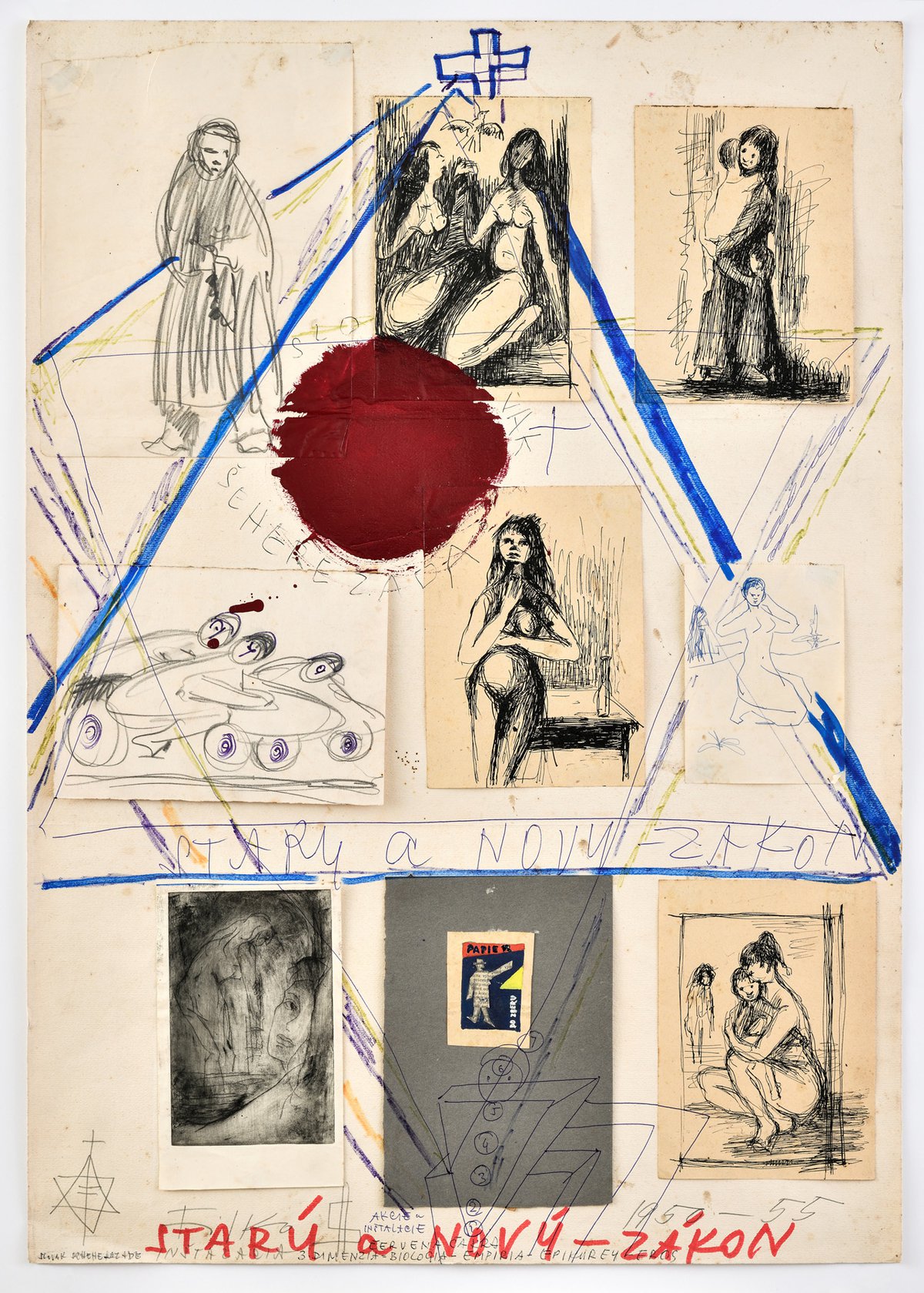
Stano Filko
From the cycle Old and New Testament
Collage, painting, felt-tip pen, pencil on paper
84.5 × 59.5 cm
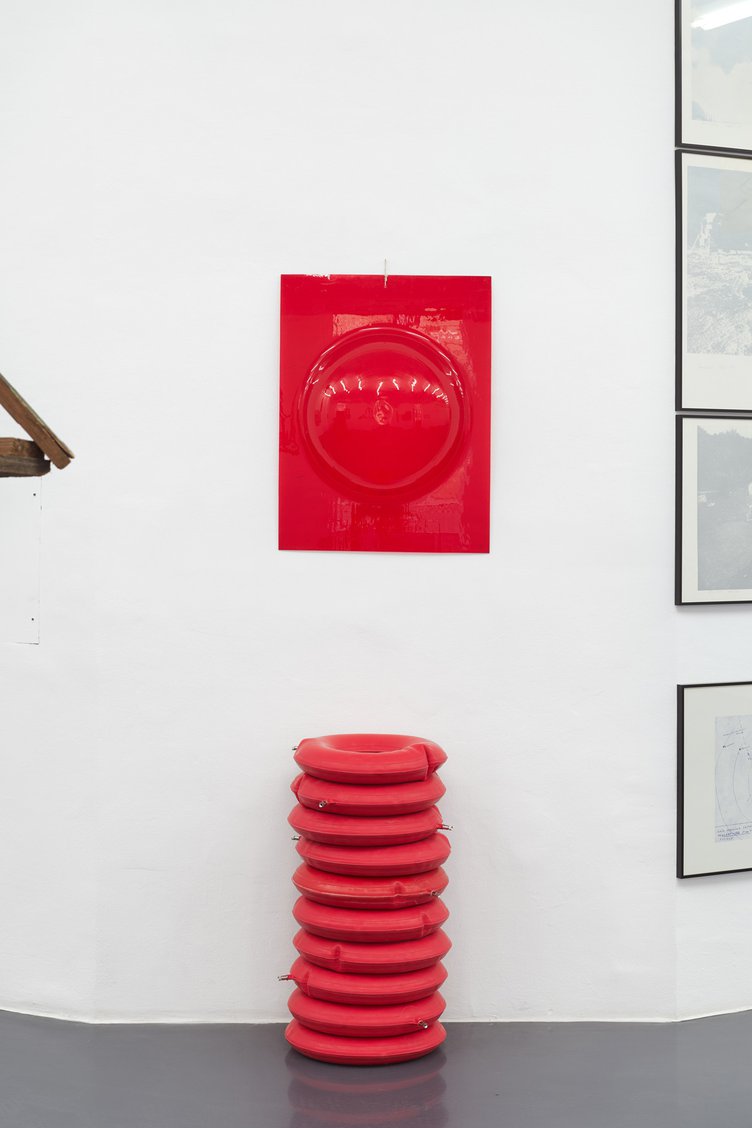
Stano Filko
Environment – Multiple (Love and Erotics) Red feminine breast, 1966/2008
Plexiglass, inflatable rubber
Dimensions variable
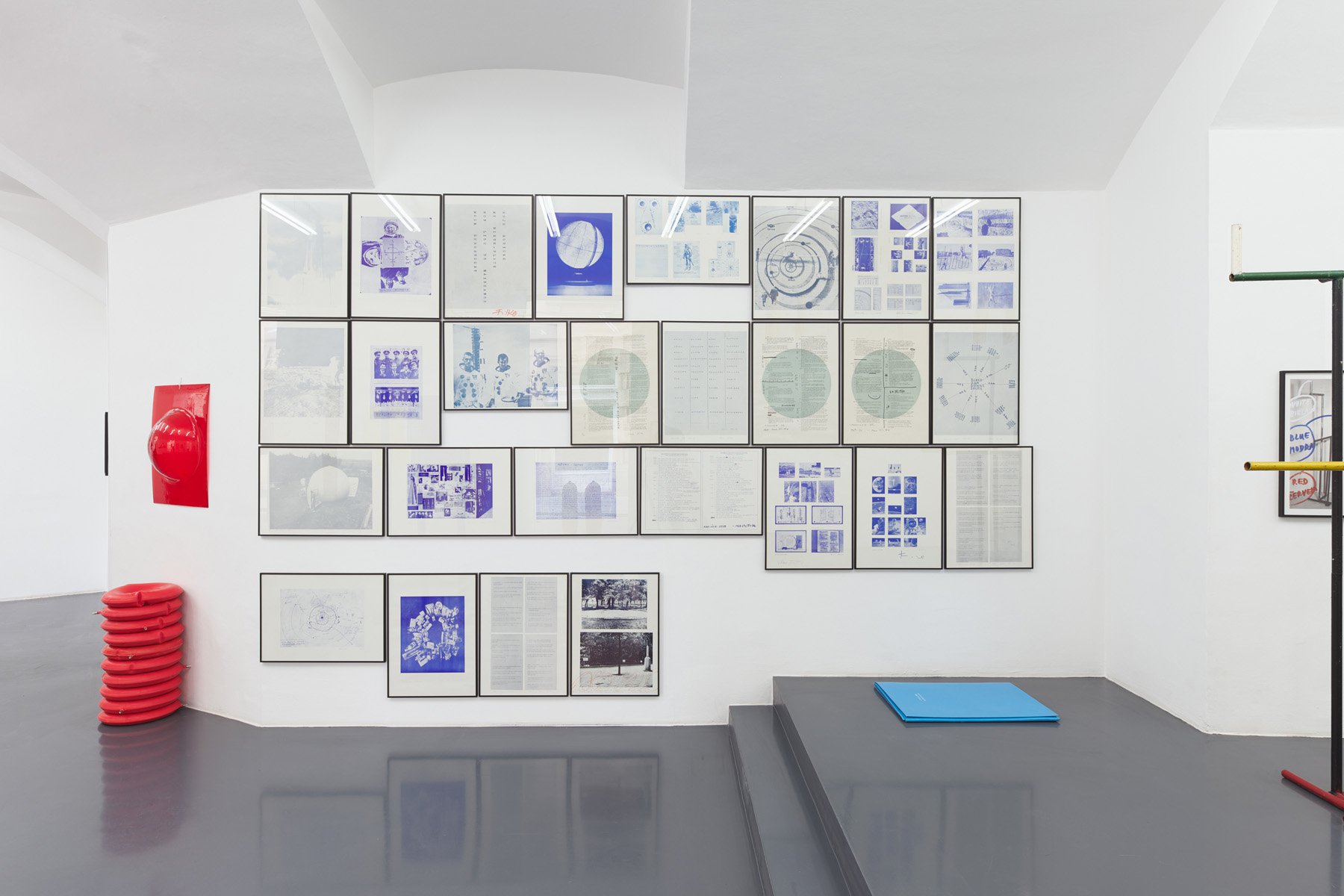
Stano Filko
MULTIMODAL GOOGLIFICATION OF COSMOLOGY-ORIENTED DIAGRAMMATIC EXPERIMENTATIONS OF STANO FILKO, 2019
Installation view
Layr Seilerstaette, Vienna
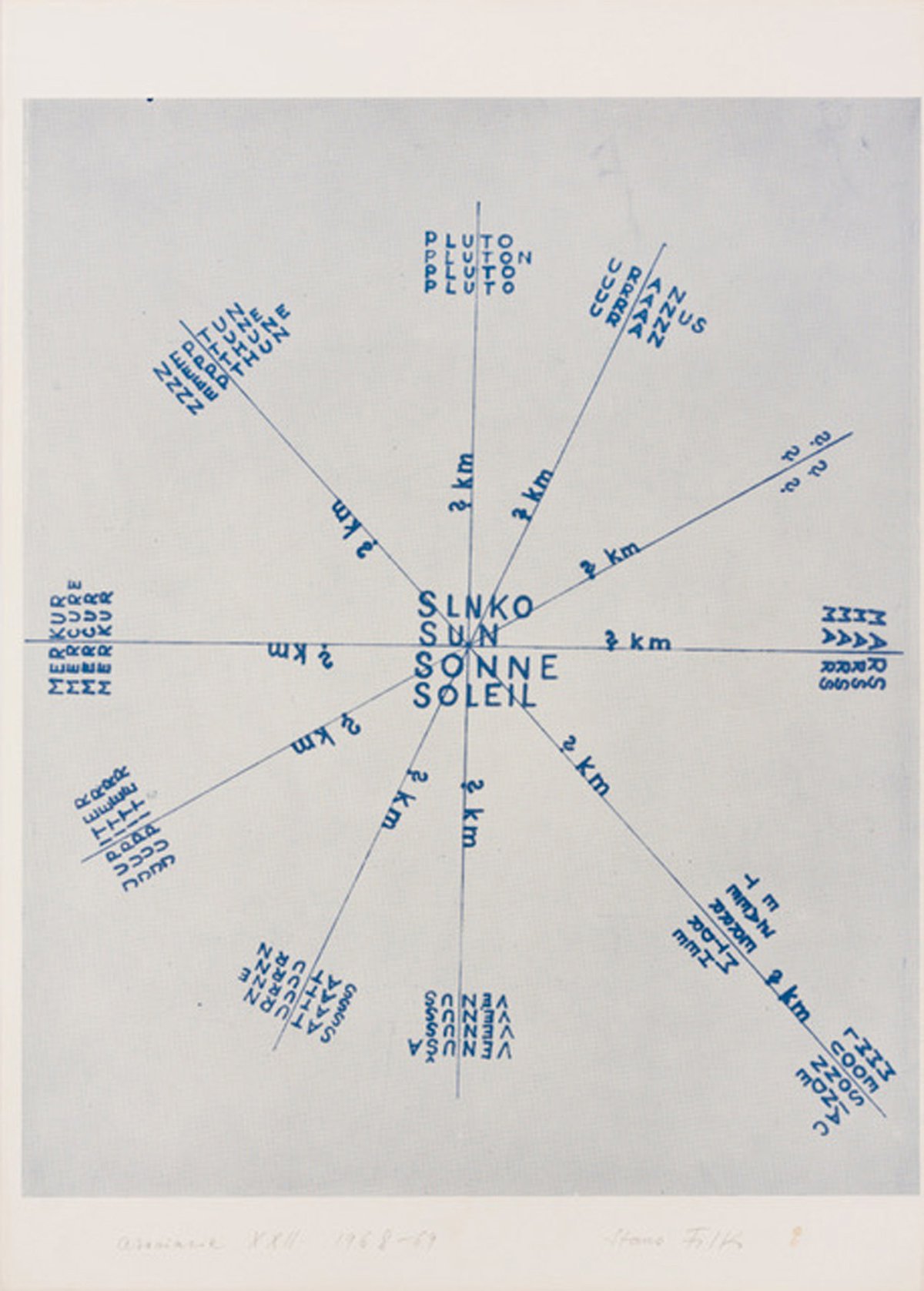
Stano Filko
Sheet from Associations
Album of graphic sheets with their original cover, serigraphy and offset print on paper
ca. 70 × 50 cm
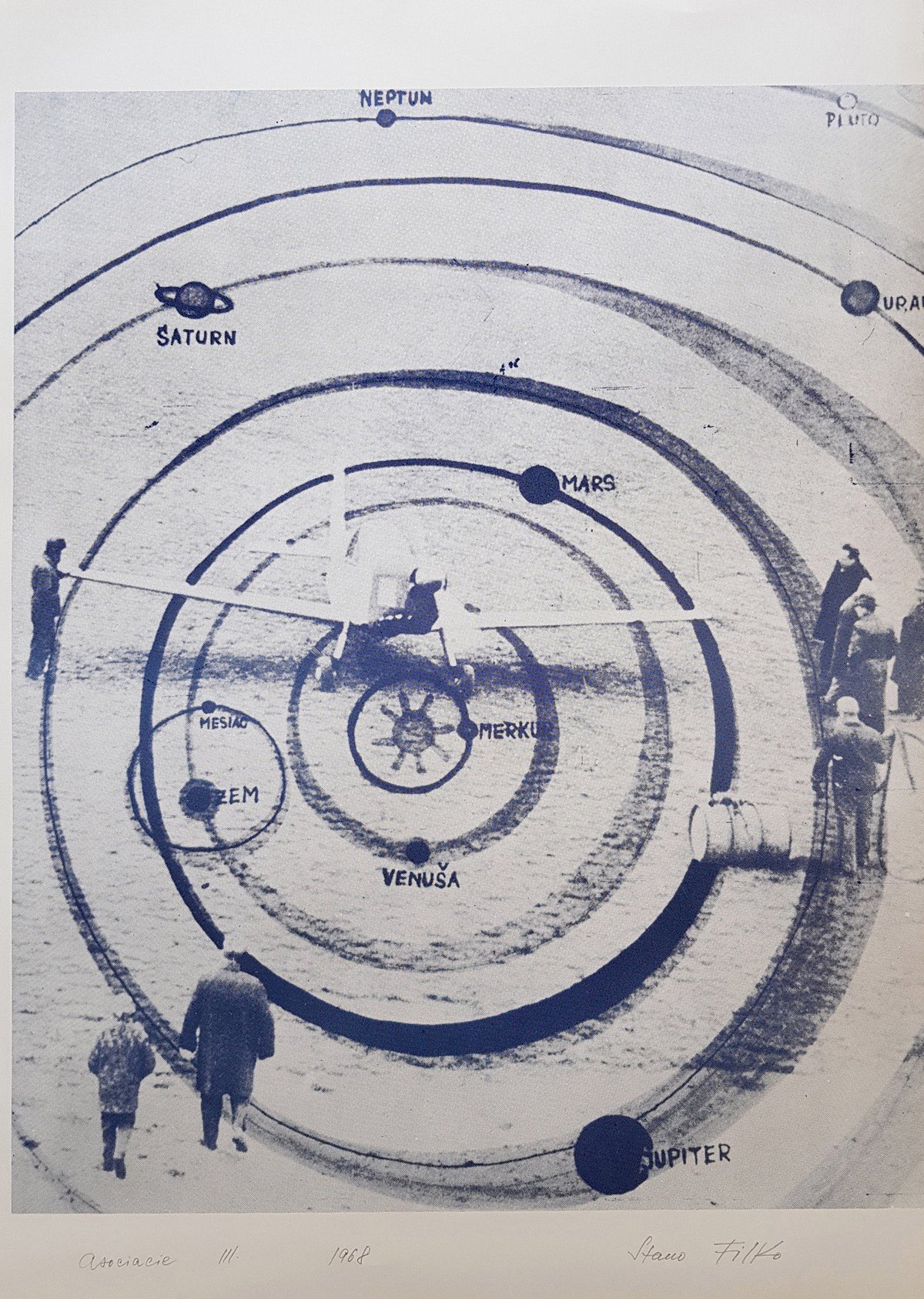
Stano Filko
Sheet from Associations
Album of graphic sheets with their original cover, serigraphy and offset print on paper
ca. 70 × 50 cm
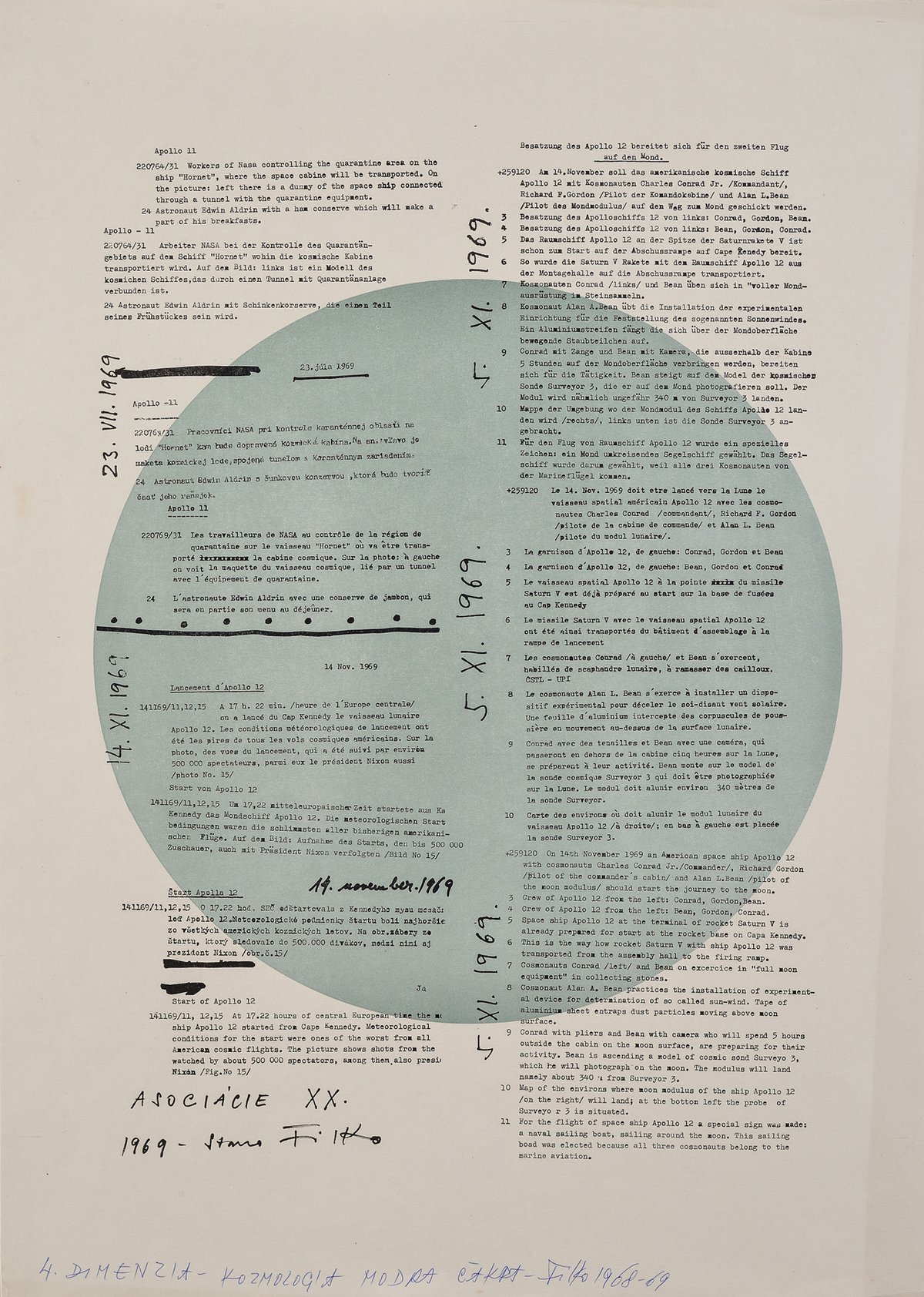
Stano Filko
Sheet from Associations
Album of graphic sheets with their original cover, serigraphy and offset print on paper
ca. 70 × 50 cm
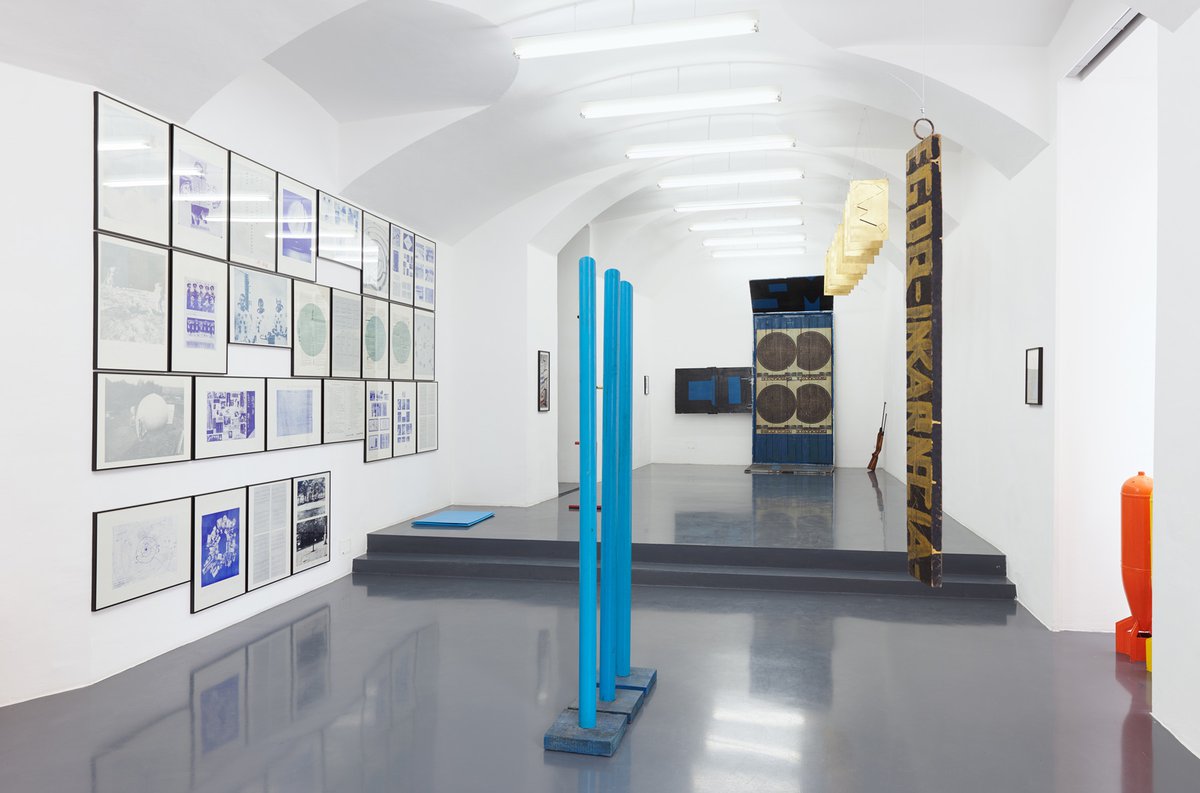
Stano Filko
MULTIMODAL GOOGLIFICATION OF COSMOLOGY-ORIENTED DIAGRAMMATIC EXPERIMENTATIONS OF STANO FILKO, 2019
Installation view
Layr Seilerstaette, Vienna
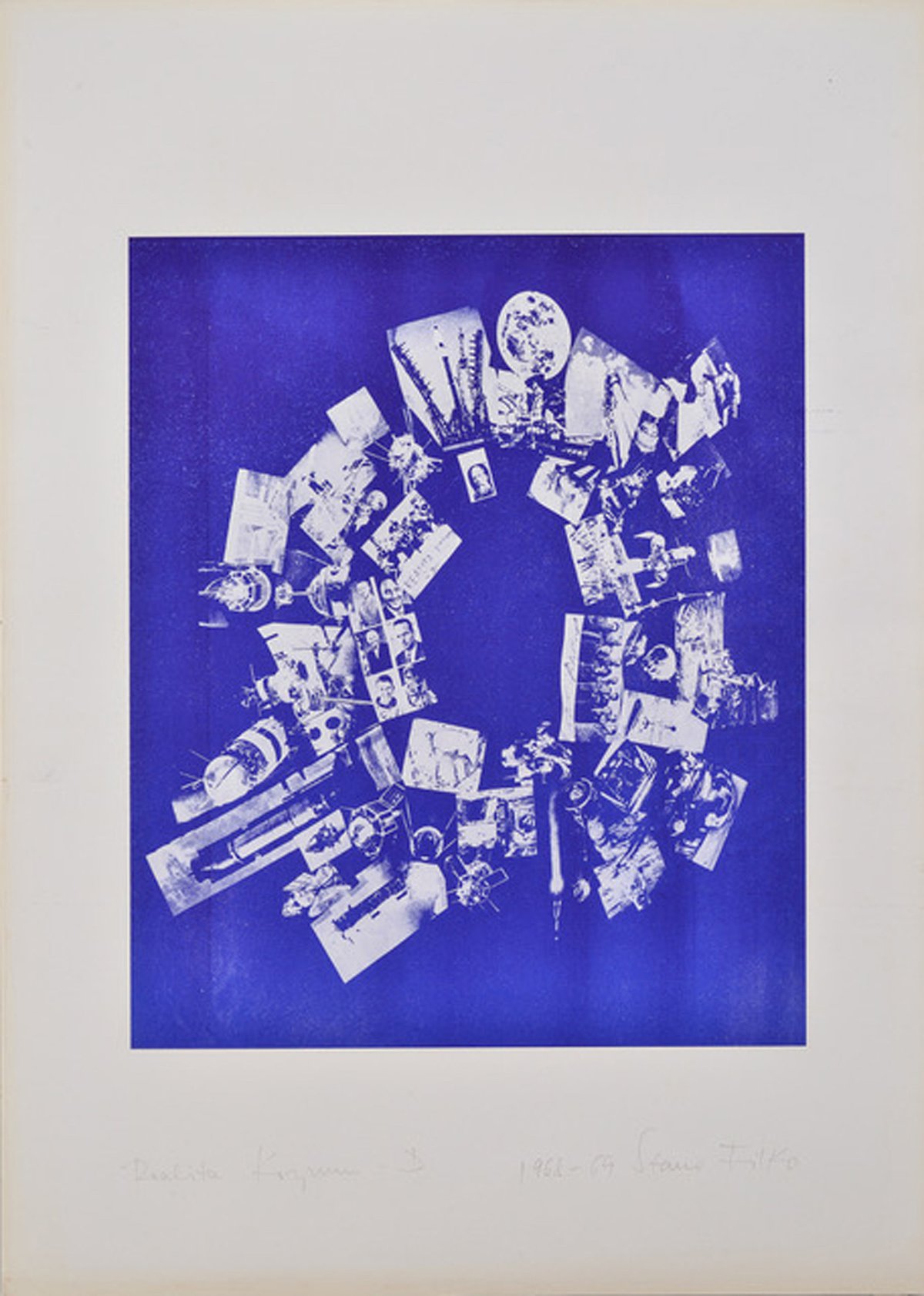
Stano Filko
Sheet from Associations
Album of graphic sheets with their original cover, serigraphy and offset print on paper
ca. 70 × 50 cm
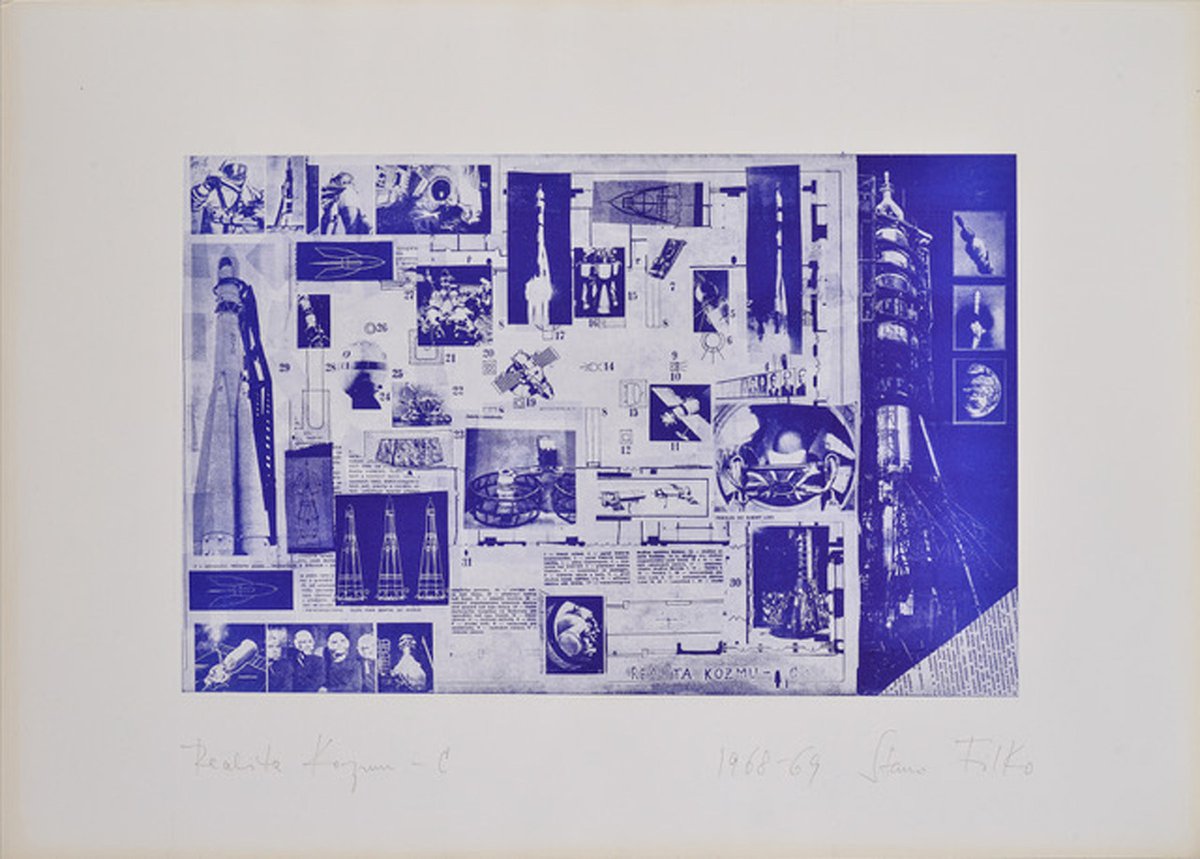
Stano Filko
Sheet from Associations
Album of graphic sheets with their original cover, serigraphy and offset print on paper
ca. 70 × 50 cm
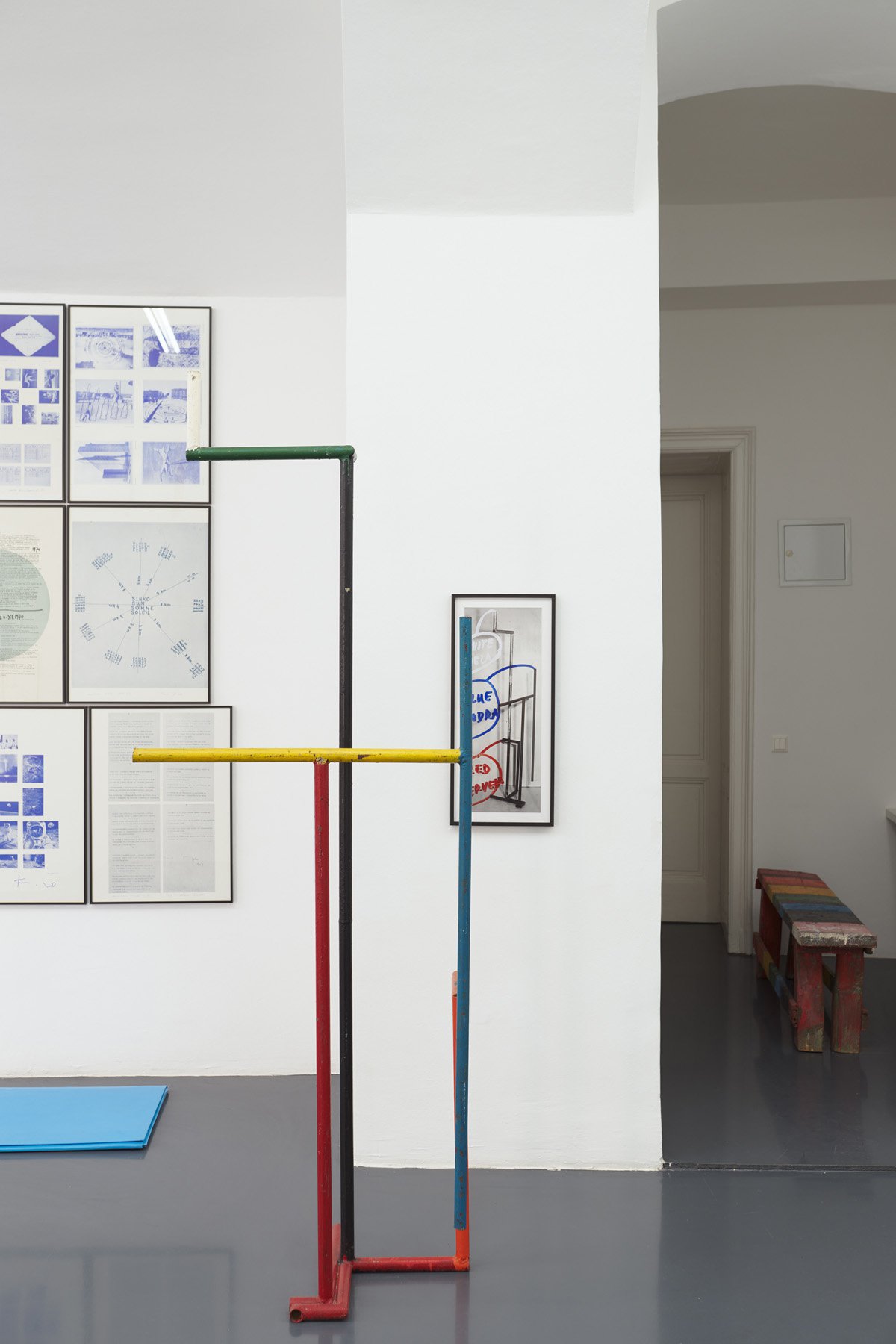
Stano Filko
MULTIMODAL GOOGLIFICATION OF COSMOLOGY-ORIENTED DIAGRAMMATIC EXPERIMENTATIONS OF STANO FILKO, 2019
Installation view
Layr Seilerstaette, Vienna
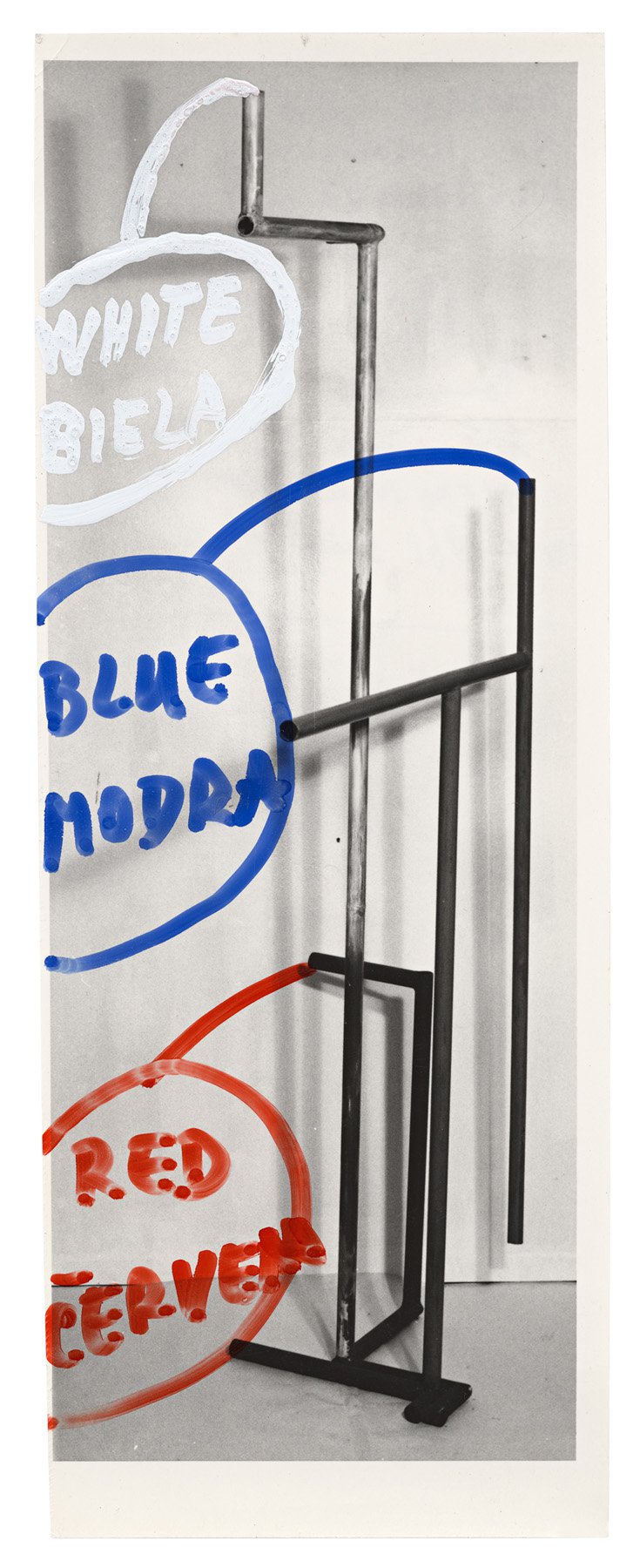
Stano Filko
The monument - Czechoslovak flag, 1968/1993
Whitening liquid, felt-tip pen, pencil on photograph
60 × 23 cm
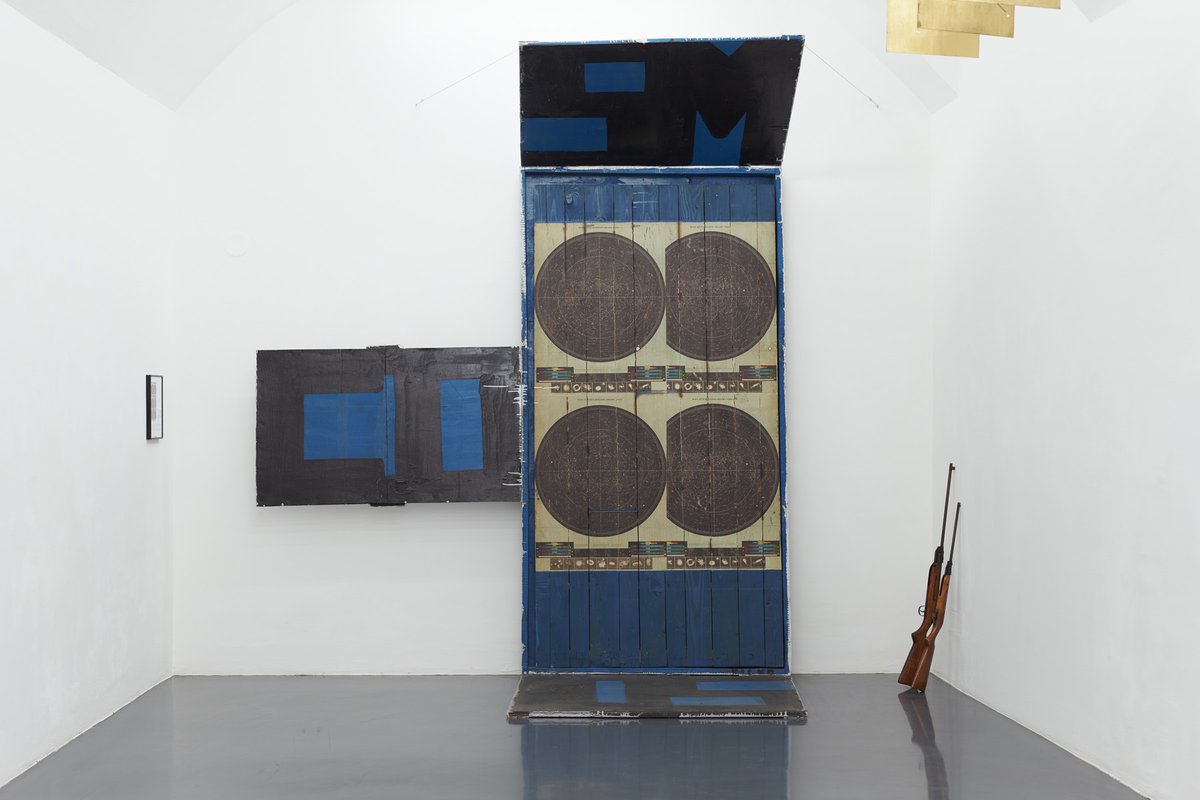
Stano Filko
Shooting range - Target Universe, 1966-67/2005
Mixed media on wood
350 × 180 cm
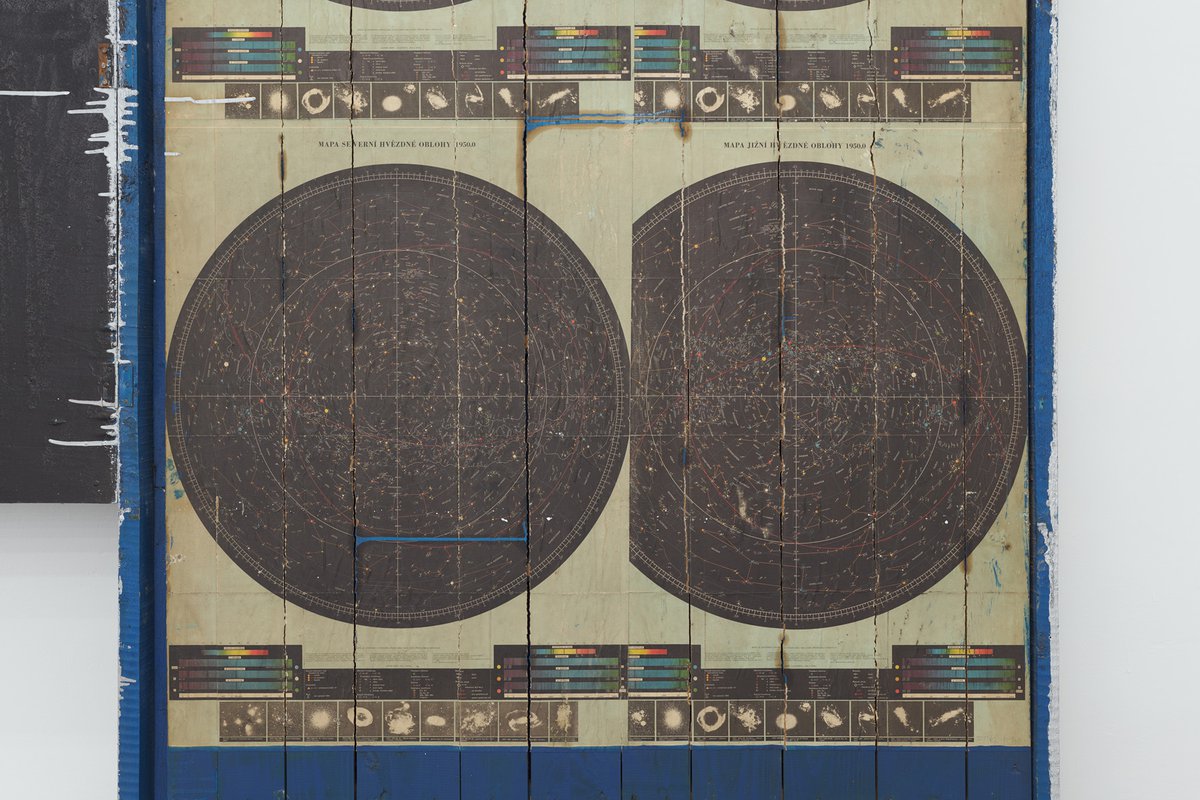
Stano Filko
Shooting range - Target Universe, 1966-67/2005
Mixed media on wood
350 × 180 cm
Detail view
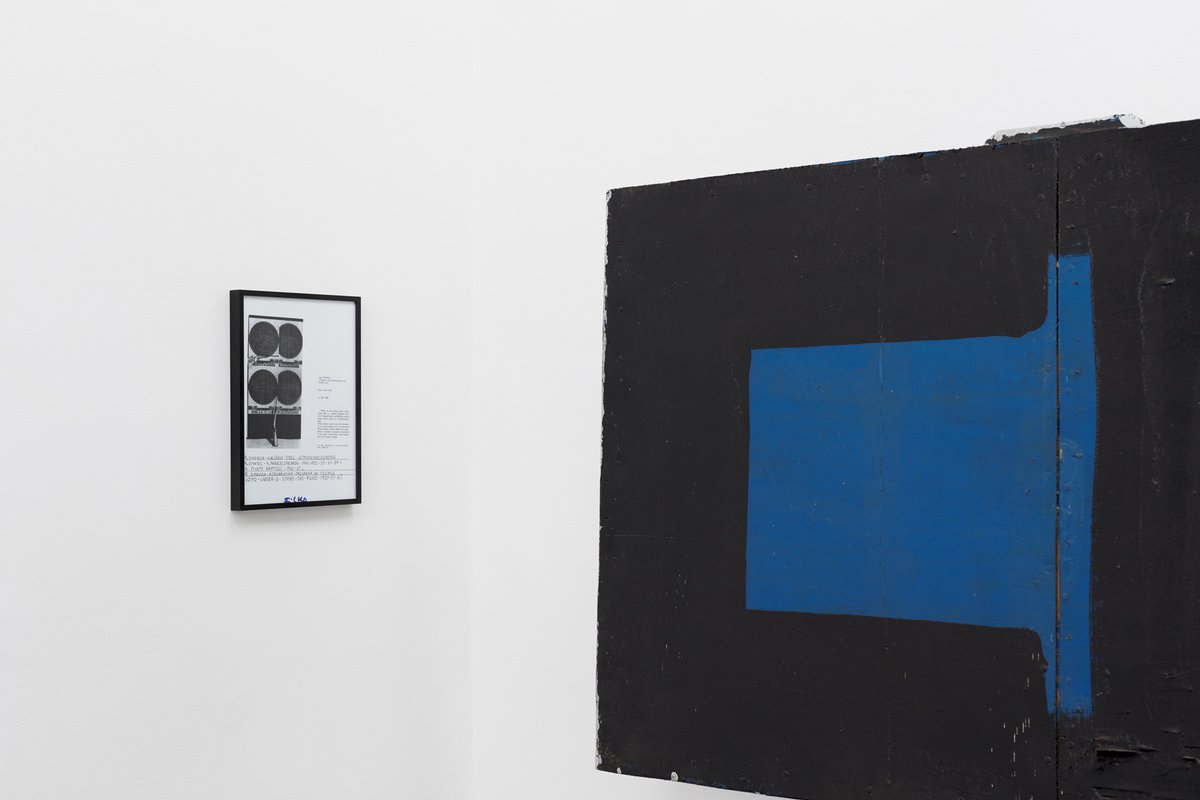
Stano Filko
Shooting range - Target Universe, 1966-67/2005
Mixed media on wood
350 × 180 cm
Detail view
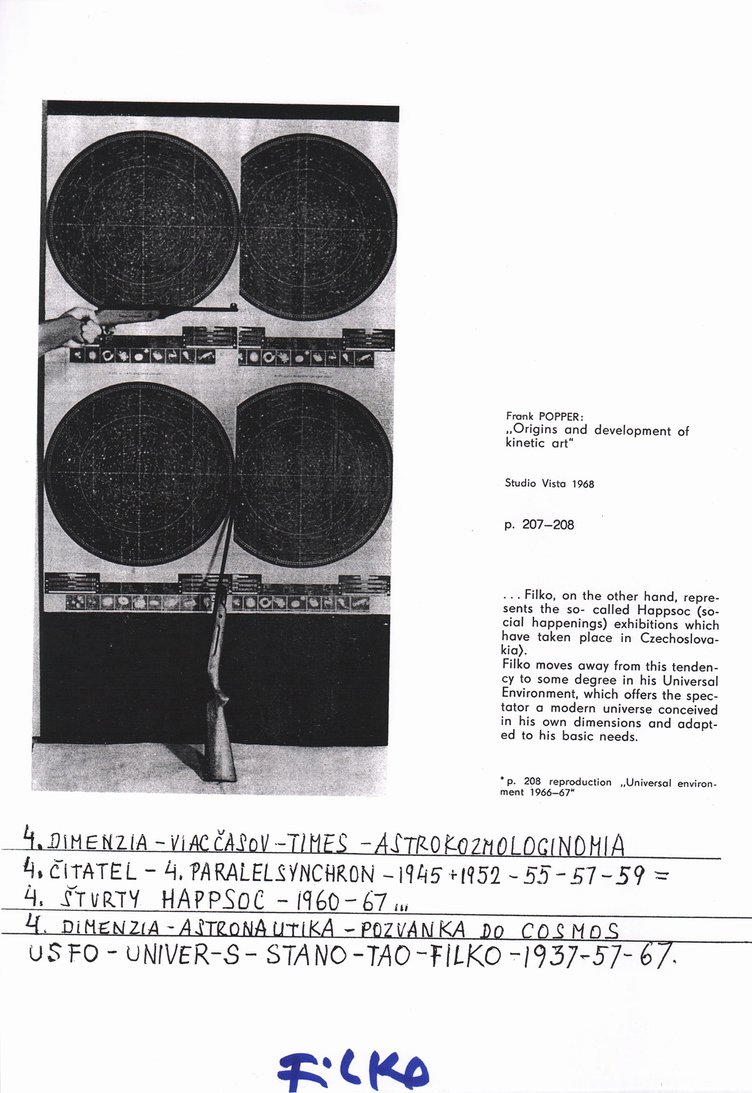
Stano Filko
A sheet from the Stano Filko portfolio, 2005
Xerocopy, pencil on paper
29.7 × 21 cm
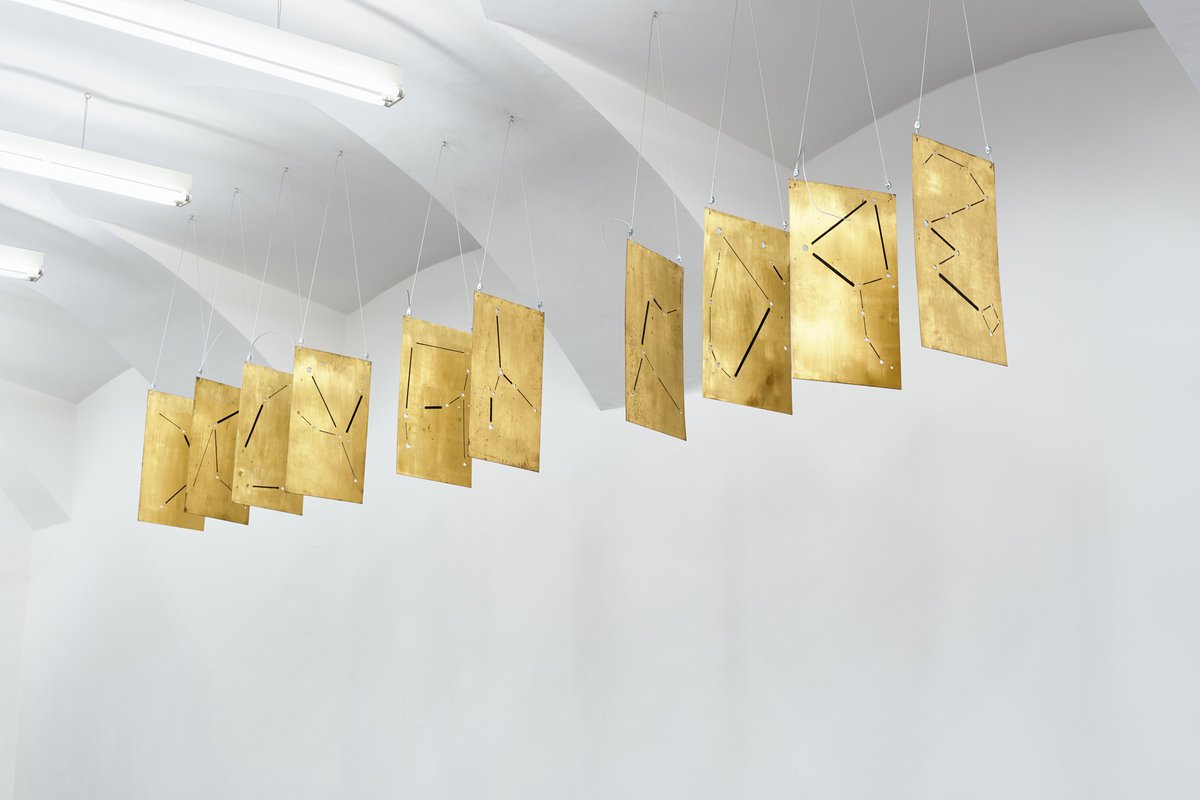
Stano Filko
Constellations, 1960’s
Synthetic paint, engraving, perforation on copper plates, 10 pieces
Each 50.5 × 3 cm
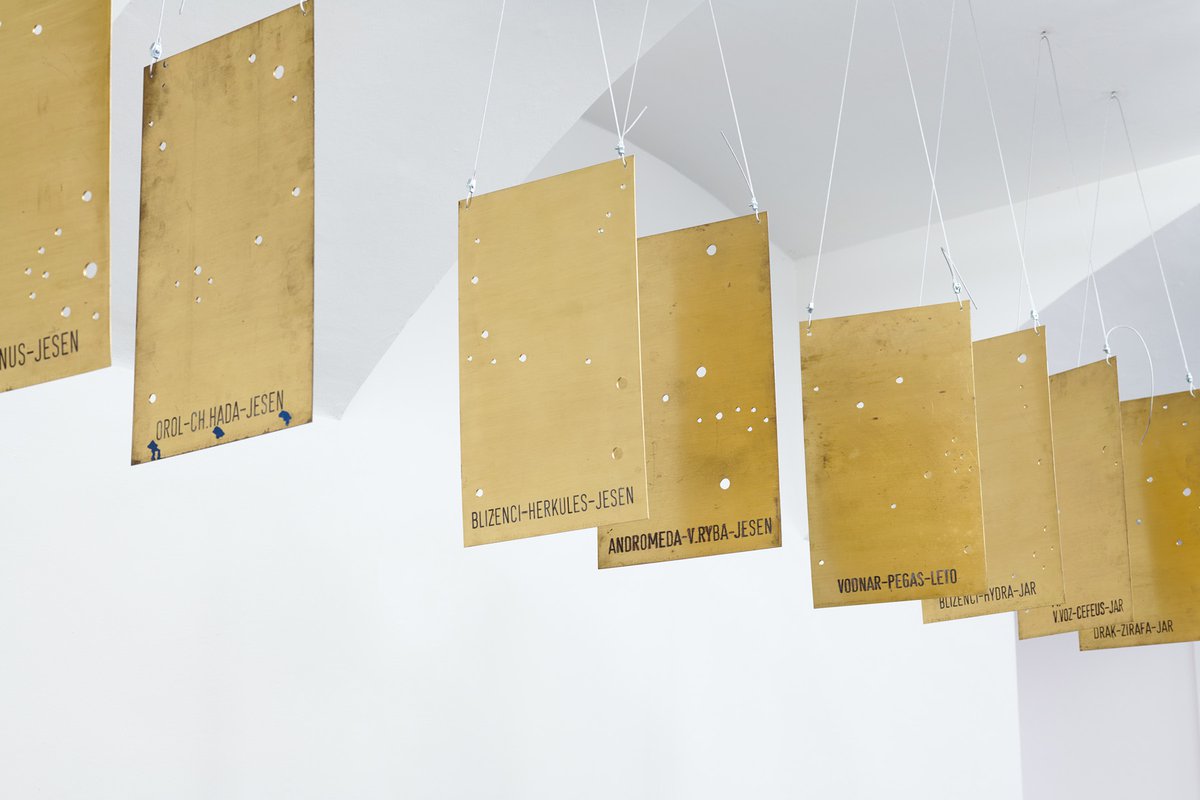
Stano Filko
Constellations, 1960’s
Synthetic paint, engraving, perforation on copper plates, 10 pieces
Each 50.5 × 3 cm
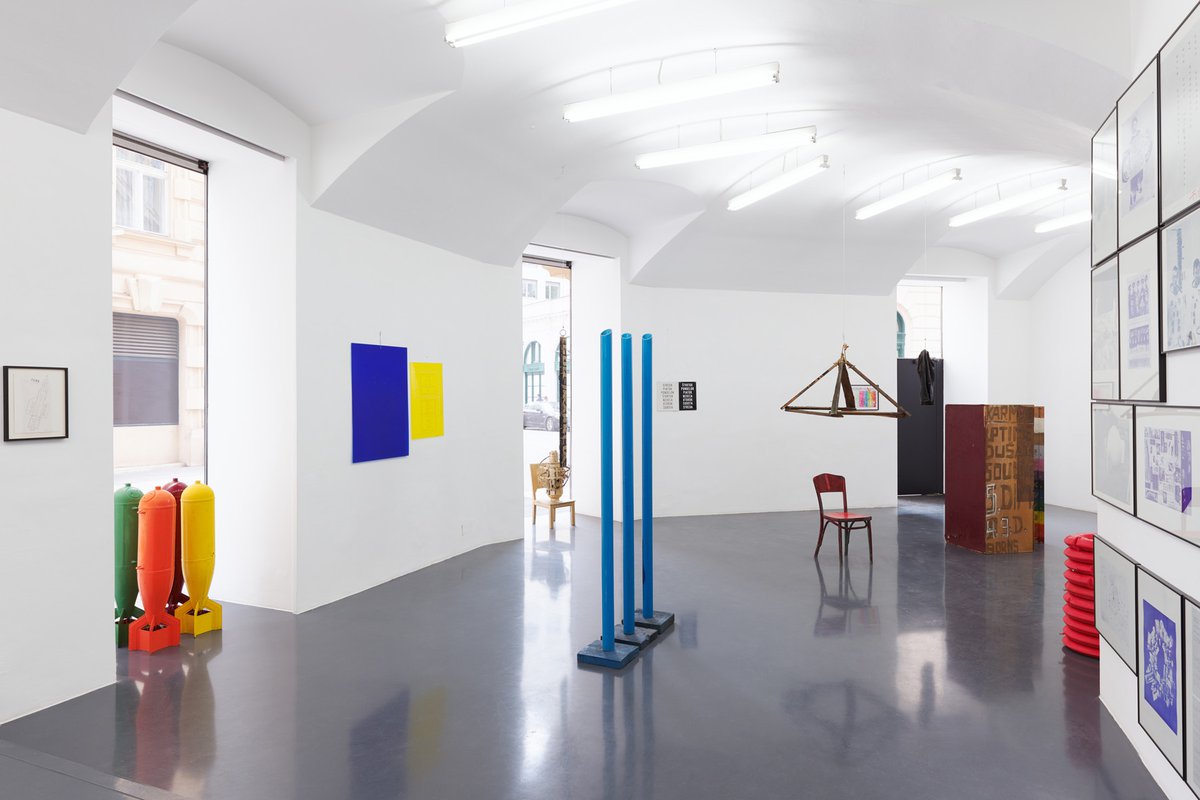
Stano Filko
MULTIMODAL GOOGLIFICATION OF COSMOLOGY-ORIENTED DIAGRAMMATIC EXPERIMENTATIONS OF STANO FILKO, 2019
Installation view
Layr Seilerstaette, Vienna
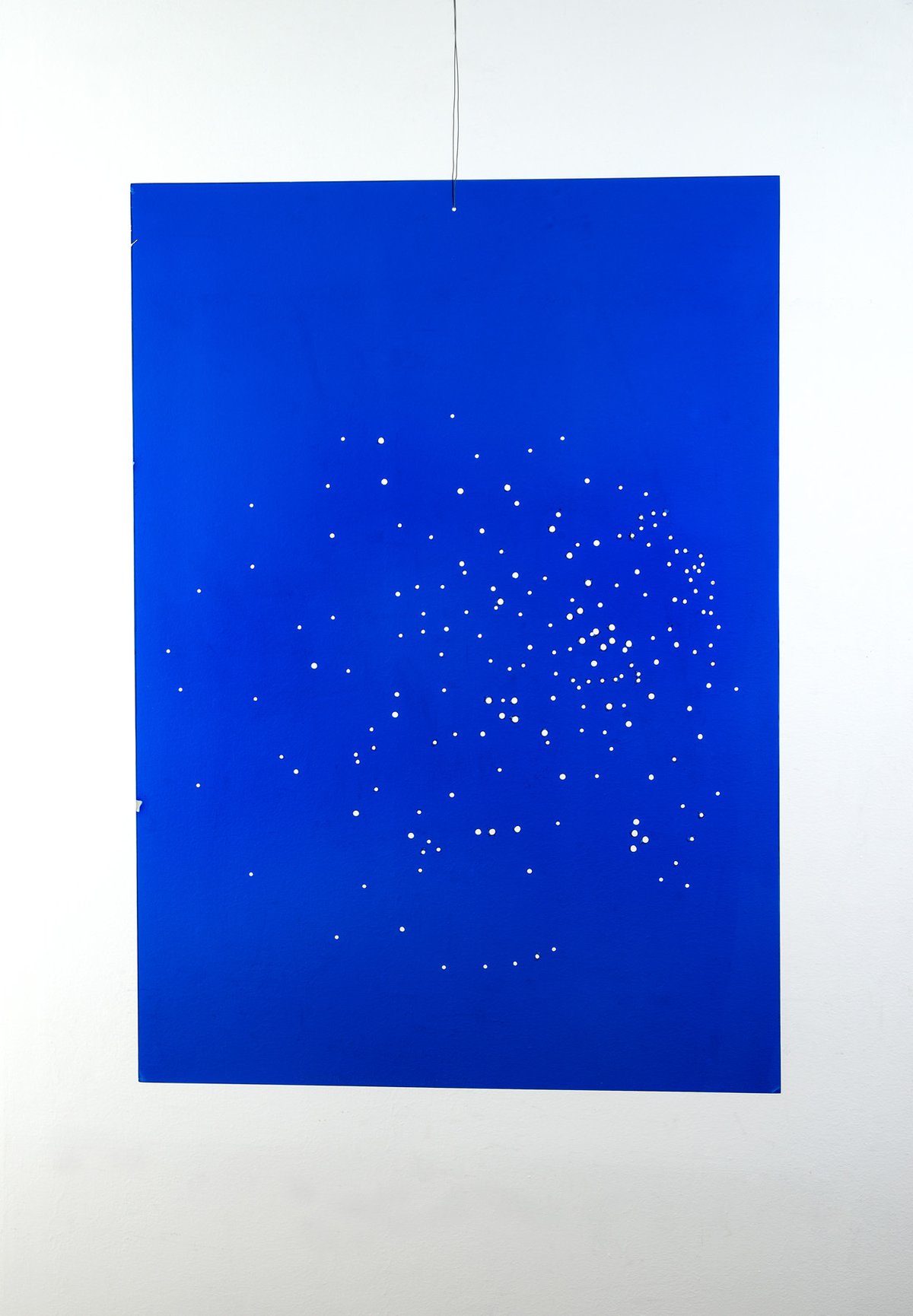
Stano Filko
From the series Picture – Space I-X, 1967
Perforation, plexiglass
100 × 72 × 3 cm
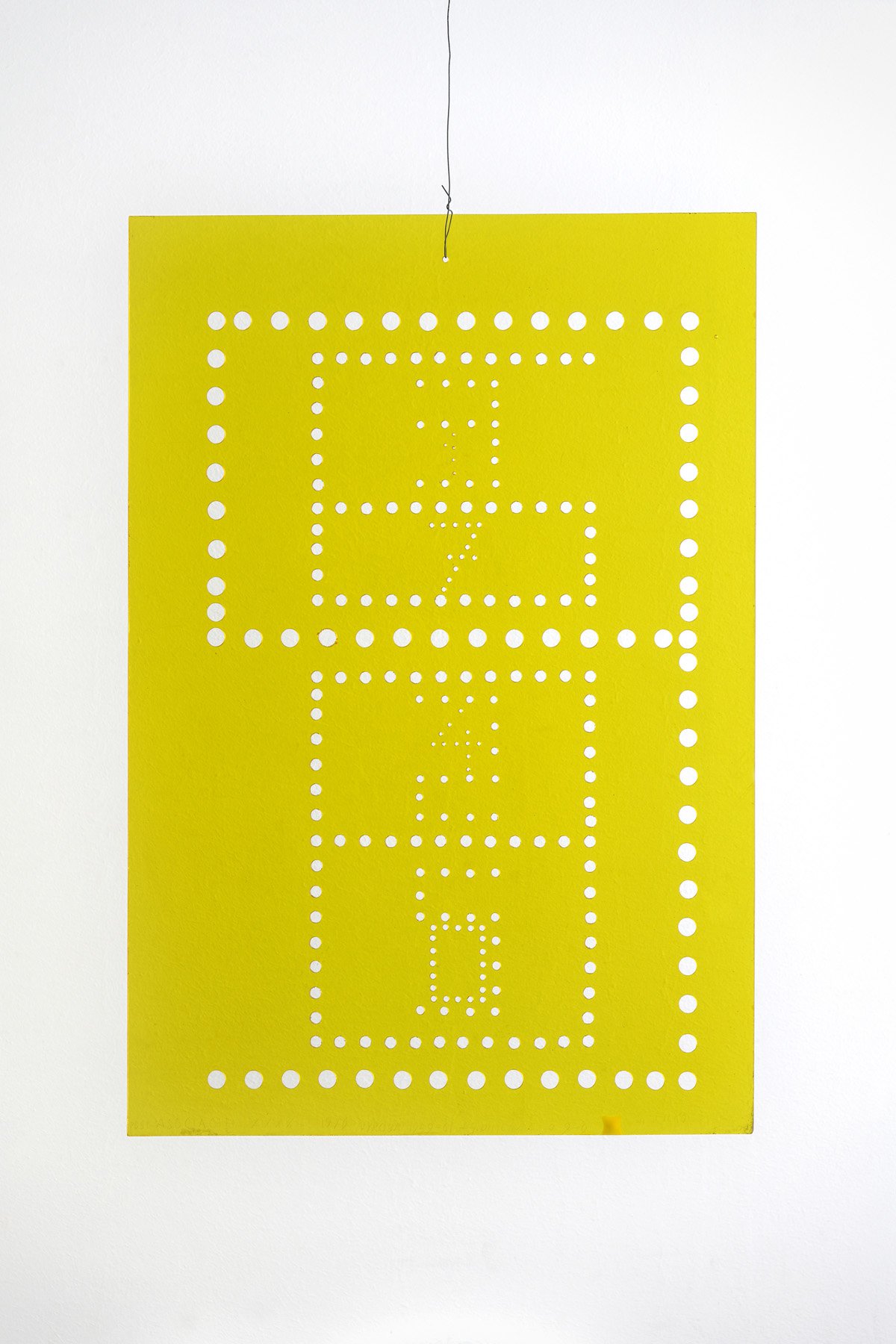
Stano Filko
From the series Associations XXXX., 1970
Perforation, plexiglass
72.5 × 50.5 cm
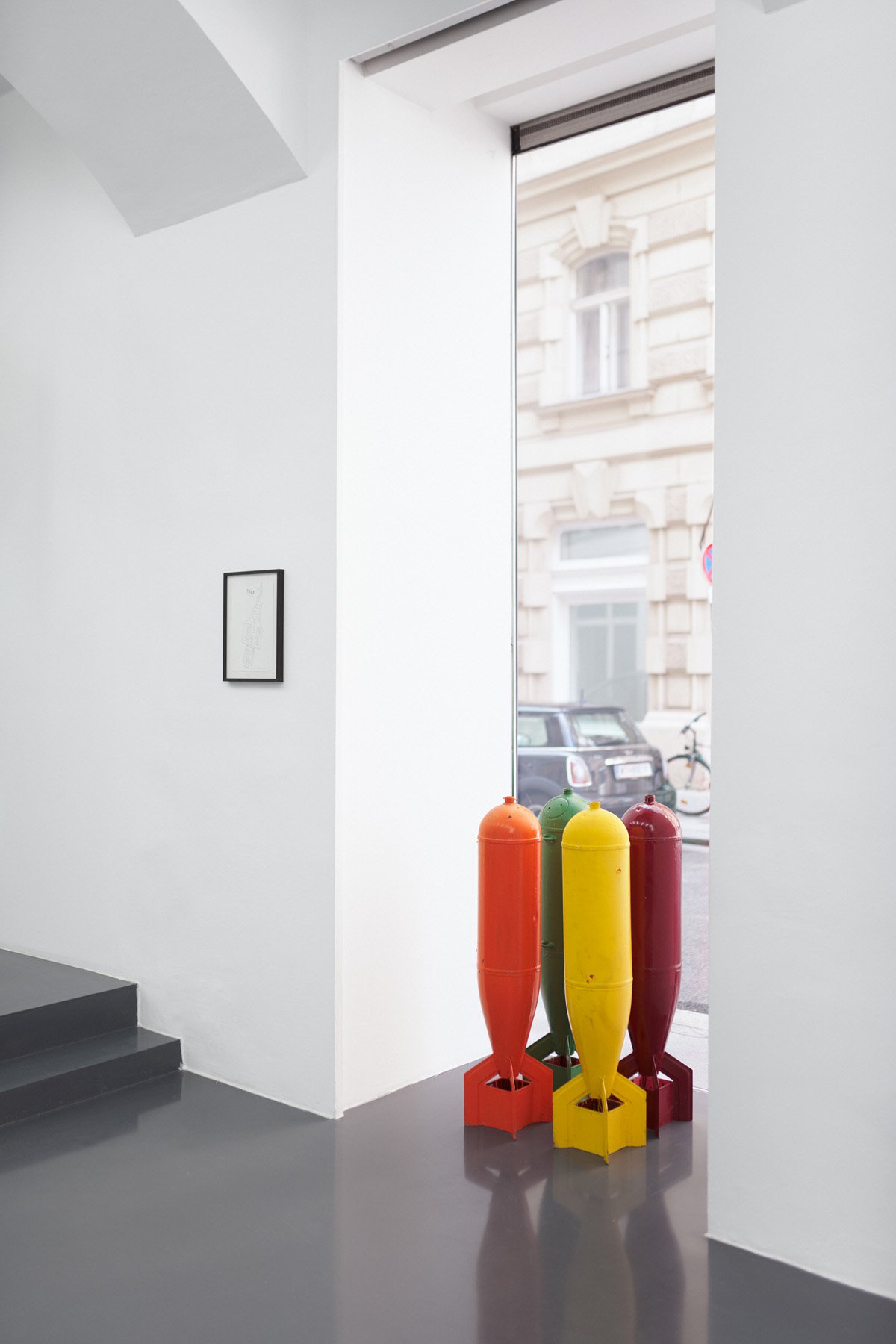
Stano Filko
Chakra Colors Rockets - Bombs, ca. 1985
Found objects, oil paint on metal
Dimensions variable
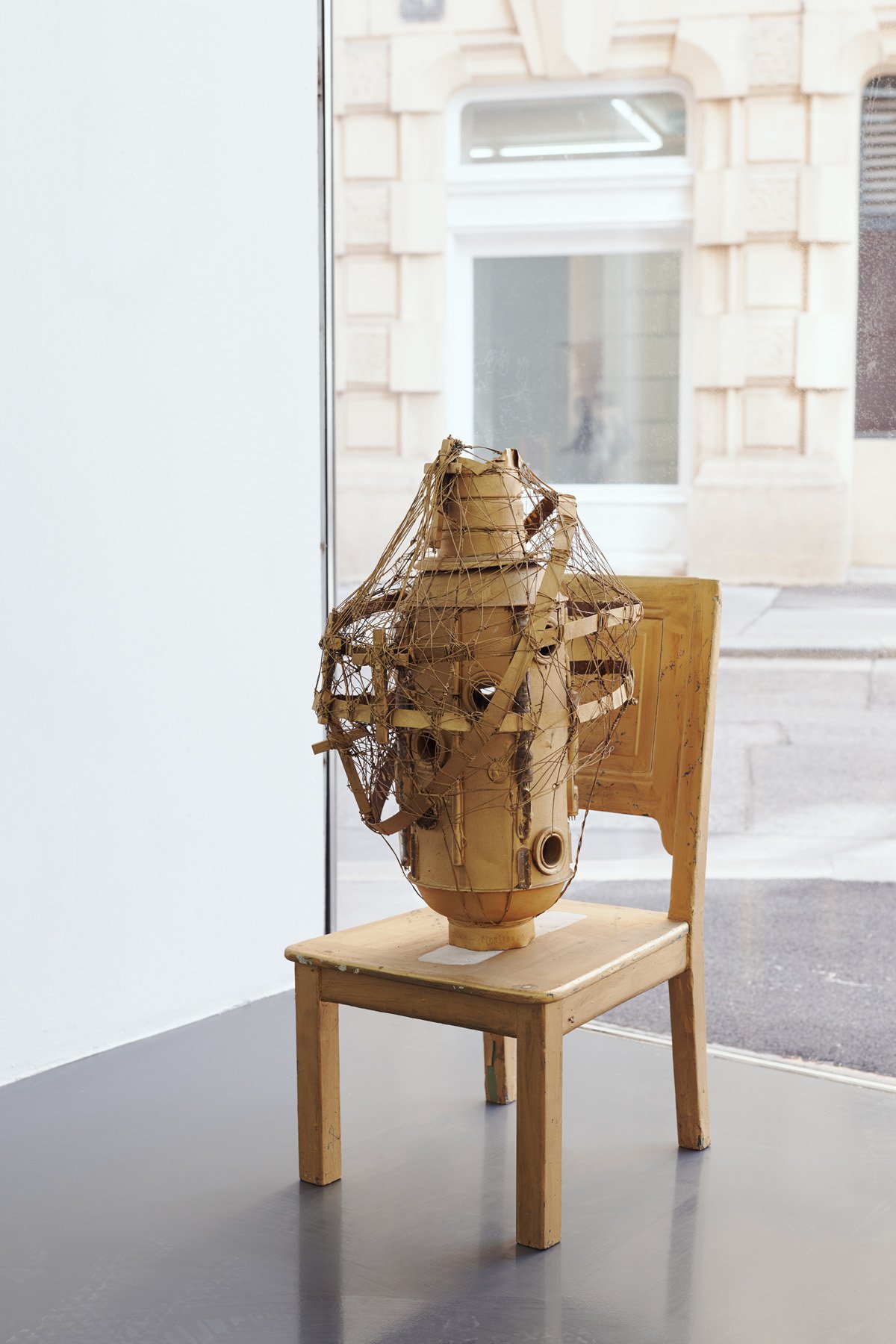
Stano Filko
Monstrance on chair
Found object, wood, mixed media
96 × 45 × 47 cm
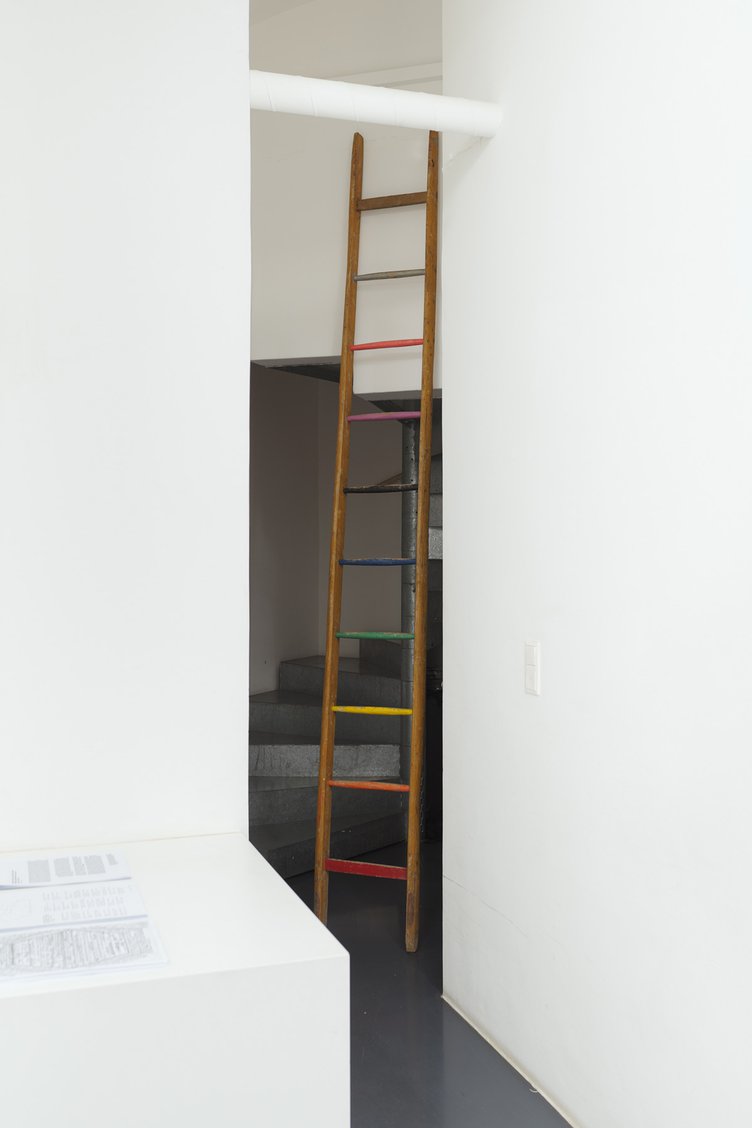
Stano Filko
12 Chakra Colors Ladder
Found object, acrylic on wood
340 cm (h)
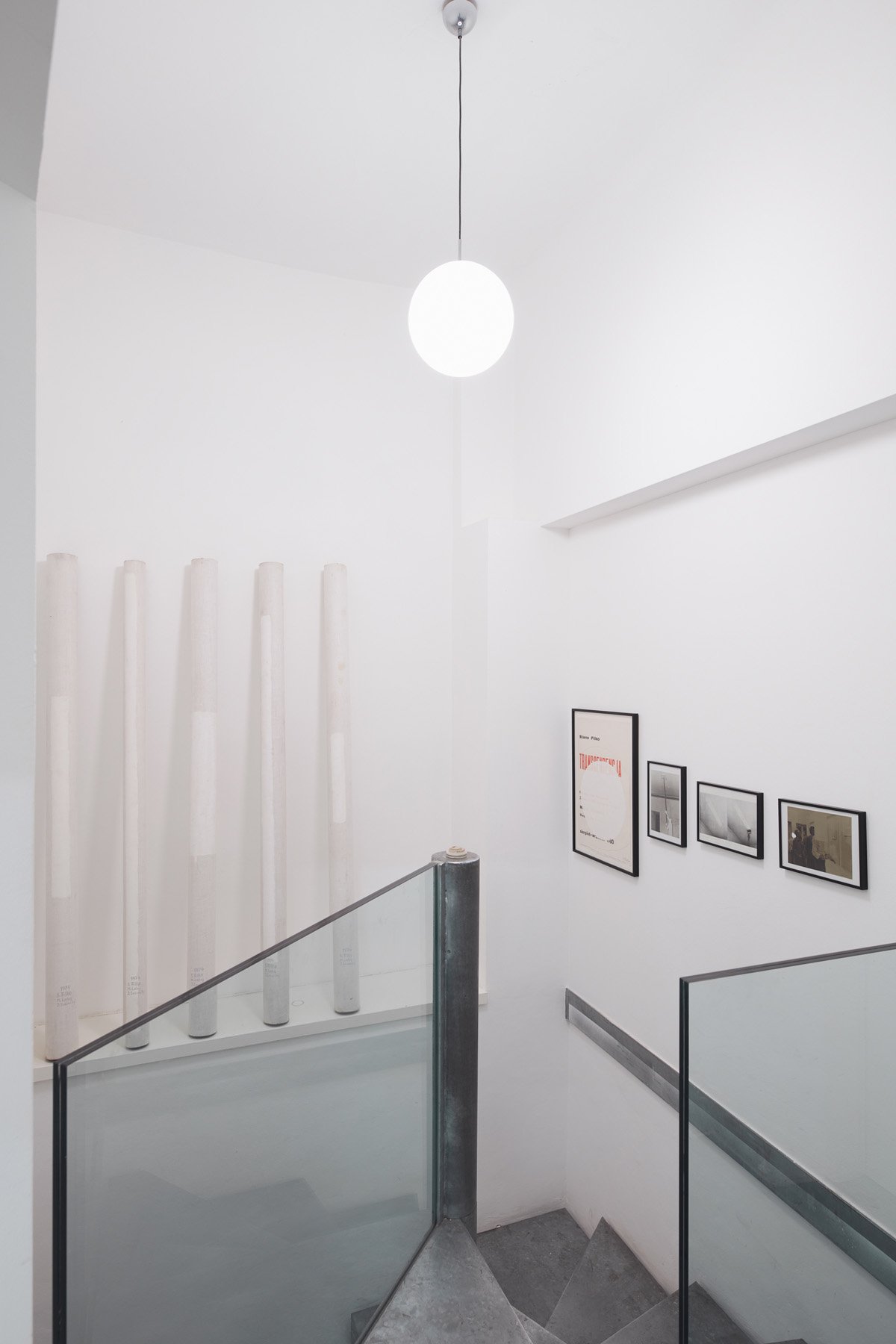
Stano Filko
MULTIMODAL GOOGLIFICATION OF COSMOLOGY-ORIENTED DIAGRAMMATIC EXPERIMENTATIONS OF STANO FILKO, 2019
Installation view
Layr Seilerstaette, Vienna
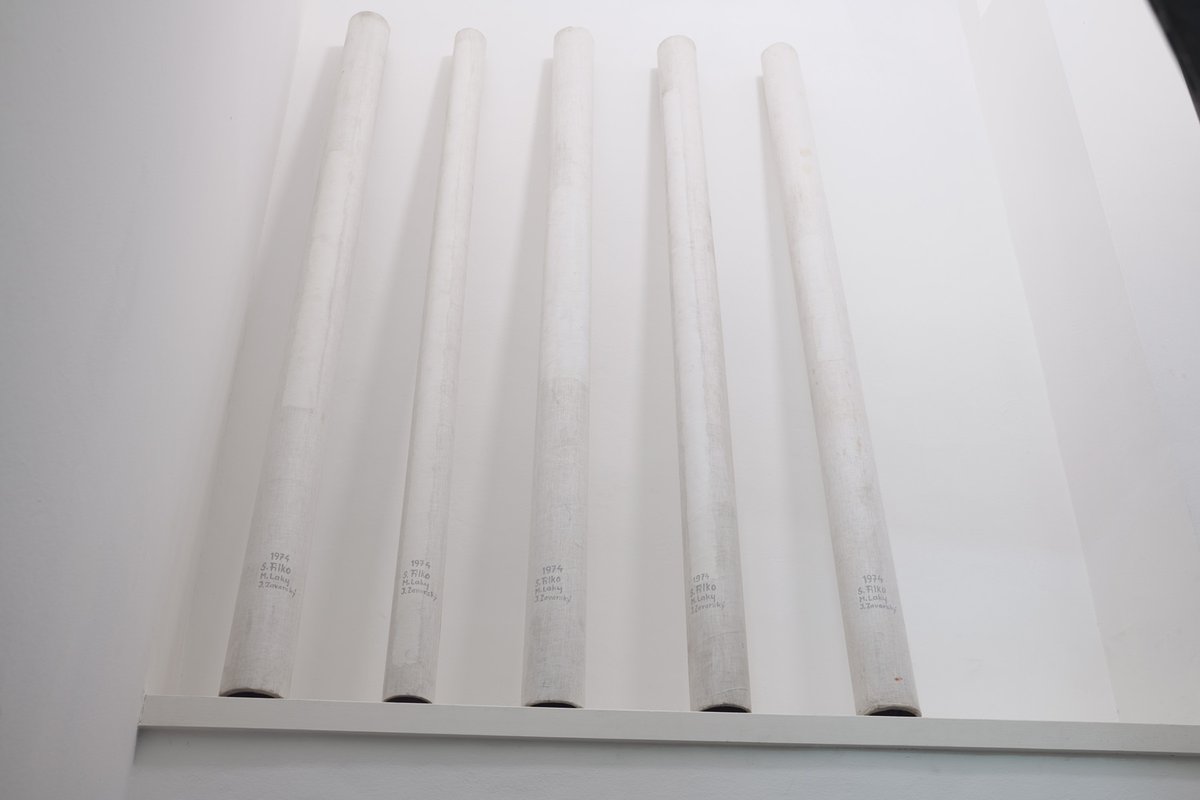
Milos Laky, Jan Zavarsky, Stano Filko
White space in white space, 1974
Paint on canvas, mounted on cardboard
Dimensions variable
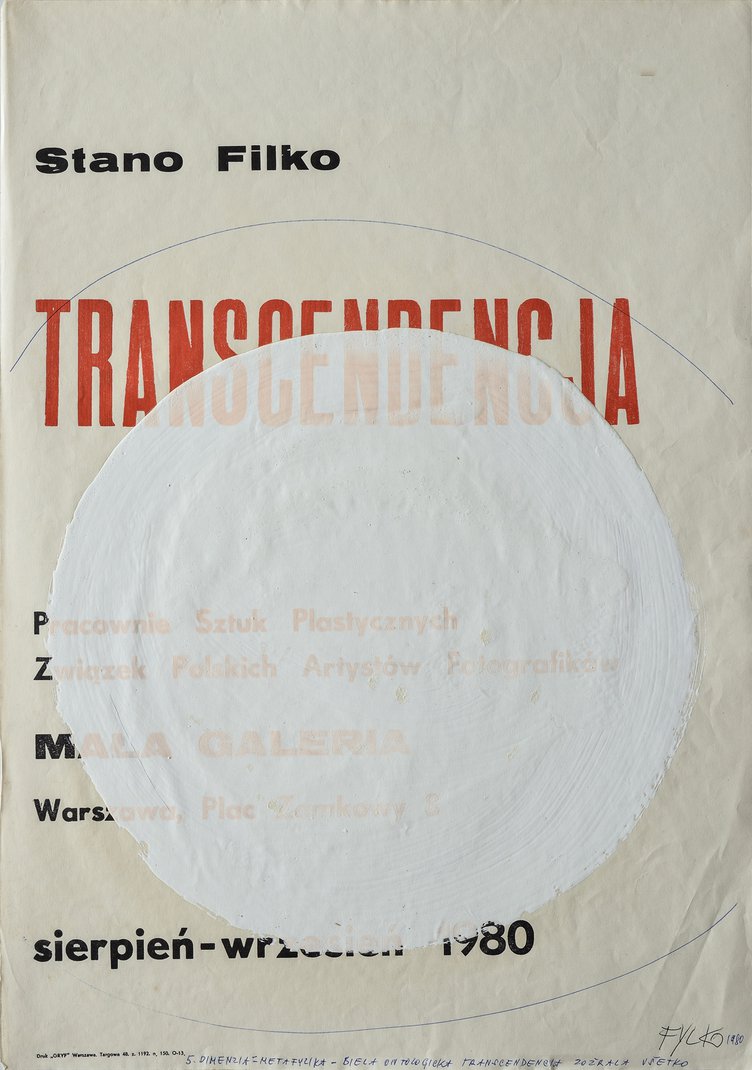
Stano Filko
5th Dimension White Ontologic Transcendence - Devoured Everything, 1980/1995
Latex paint, pen, offset print on paper
60 × 42 cm
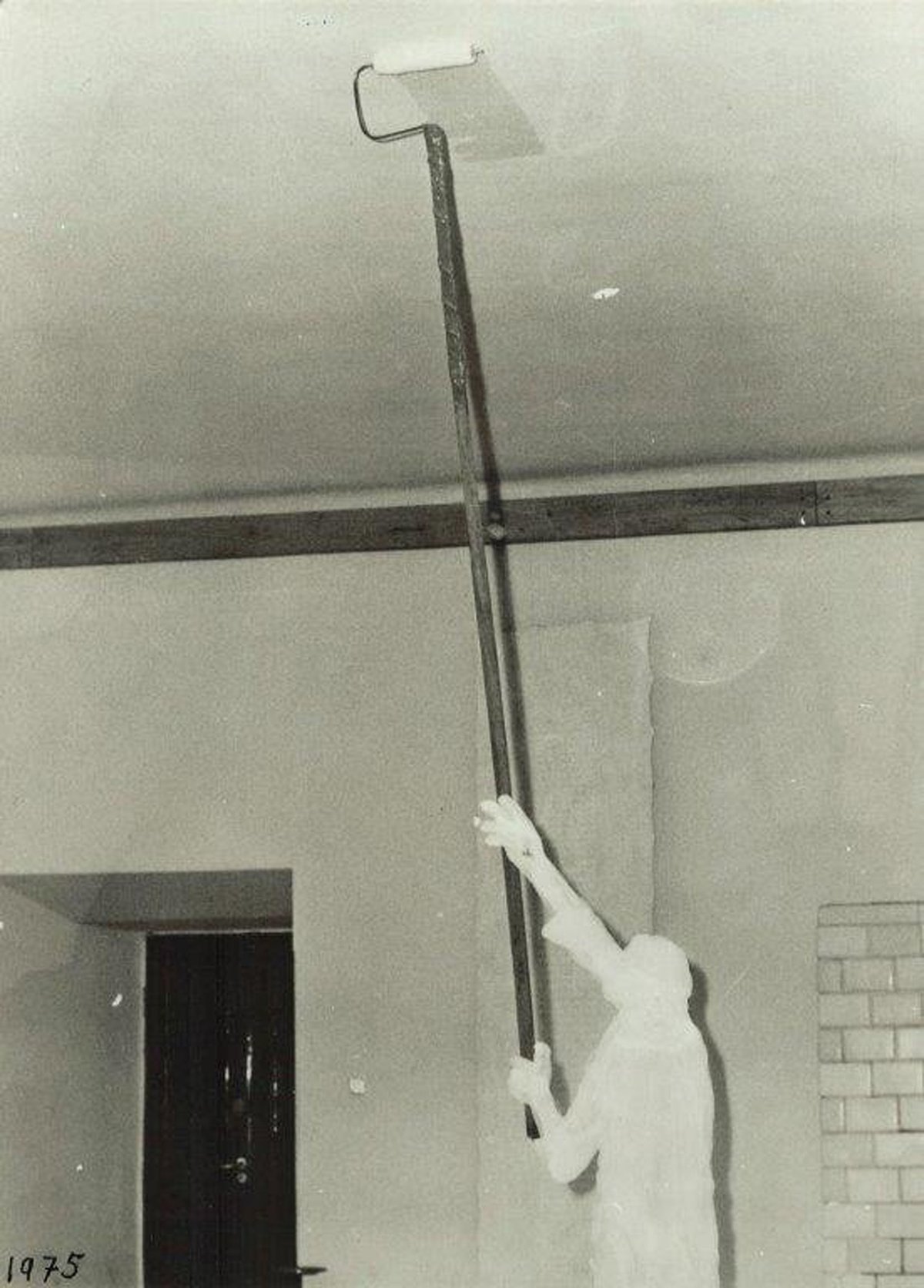
Stano Filko
Untitled
Photograph, pen and pencil on paper
24.3. × 17.9 cm
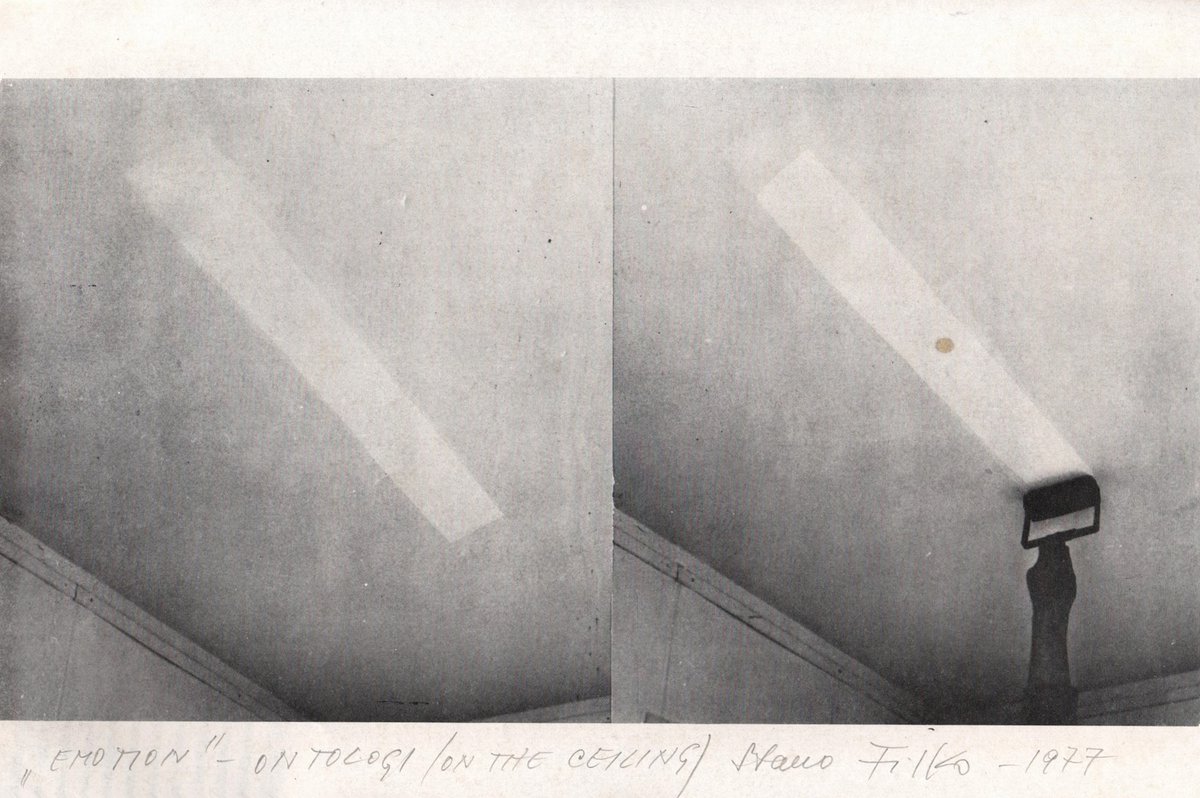
Stano Filko
From the series Emotion, 1977
Offset print on paper
28.6 × 19 cm
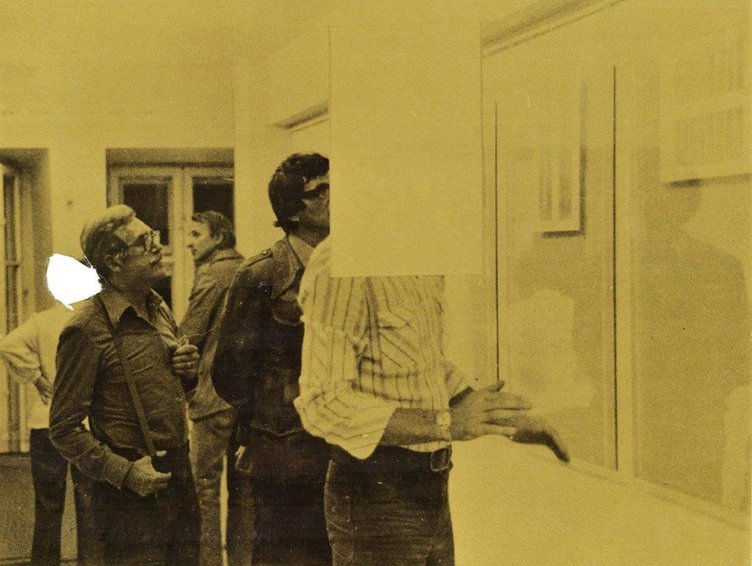
Stano Filko
Transcendency, 1978-79
Photograph, pencil on paper
18 × 23.9 cm
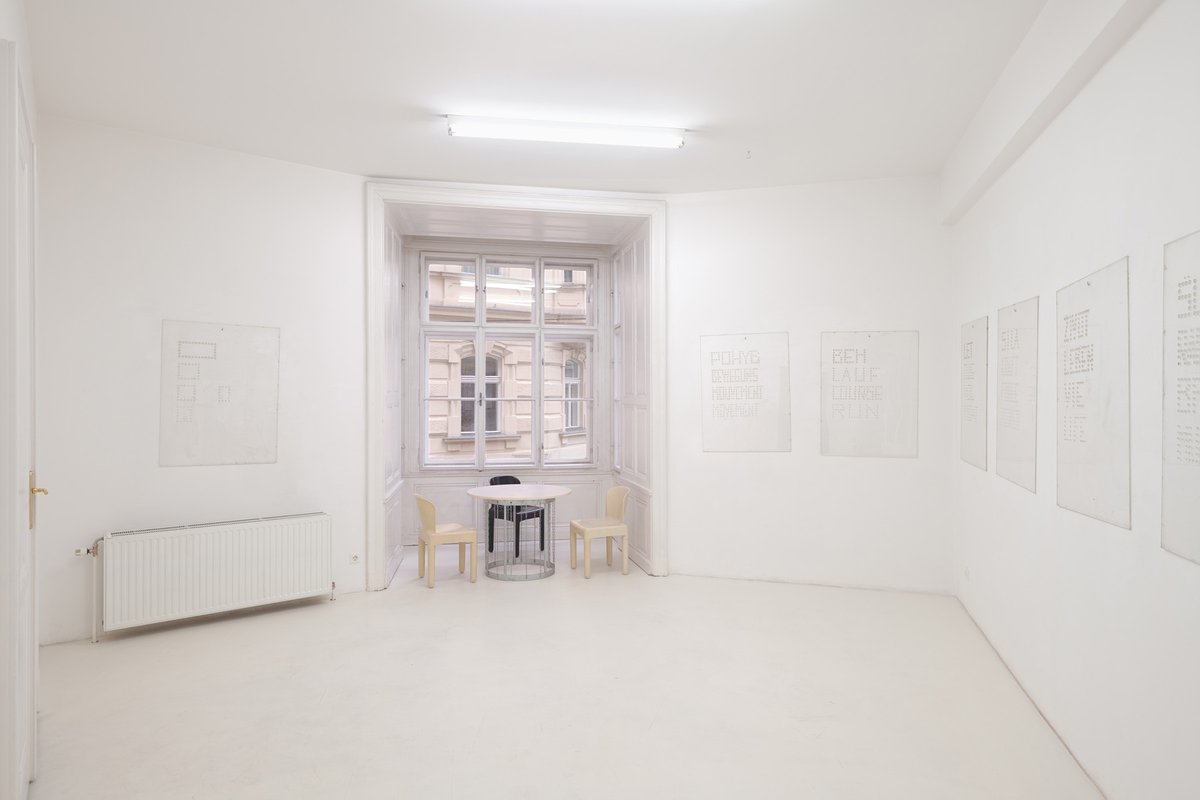
Stano Filko
MULTIMODAL GOOGLIFICATION OF COSMOLOGY-ORIENTED DIAGRAMMATIC EXPERIMENTATIONS OF STANO FILKO, 2019
Installation view
Layr Seilerstaette, Vienna
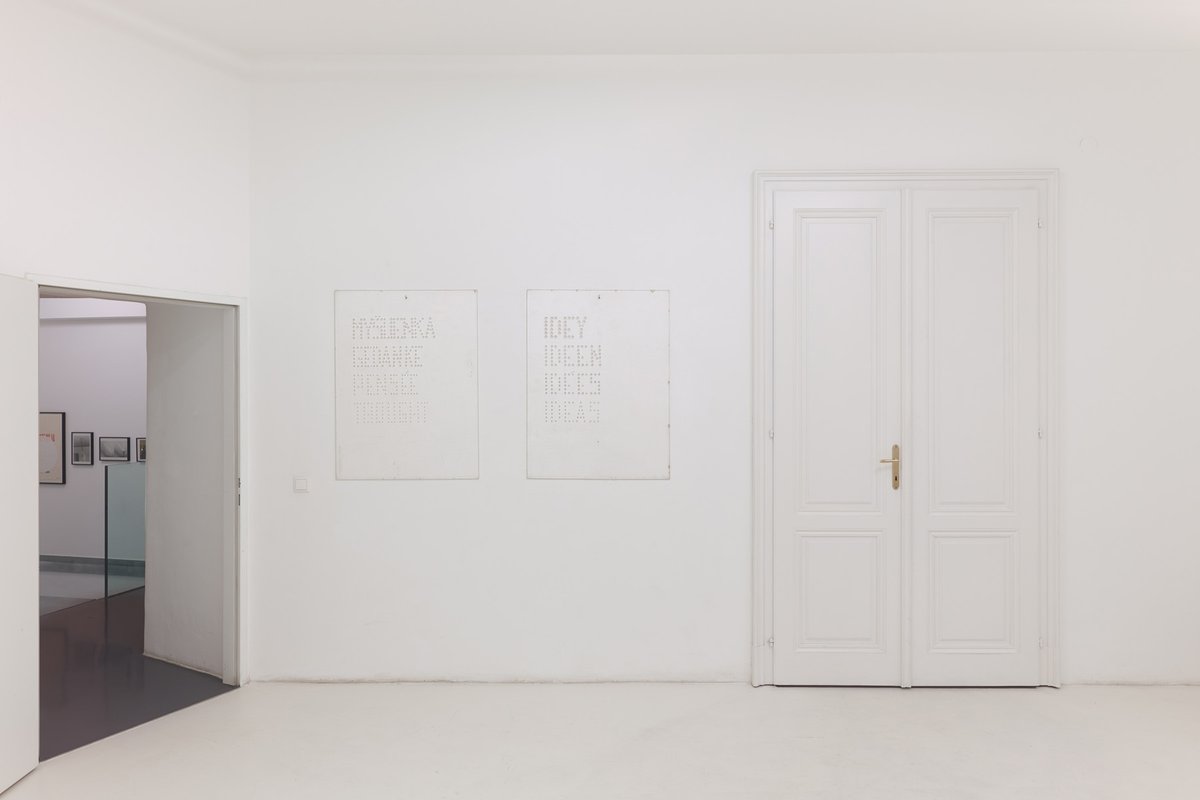
Stano Filko
MULTIMODAL GOOGLIFICATION OF COSMOLOGY-ORIENTED DIAGRAMMATIC EXPERIMENTATIONS OF STANO FILKO, 2019
Installation view
Layr Seilerstaette, Vienna
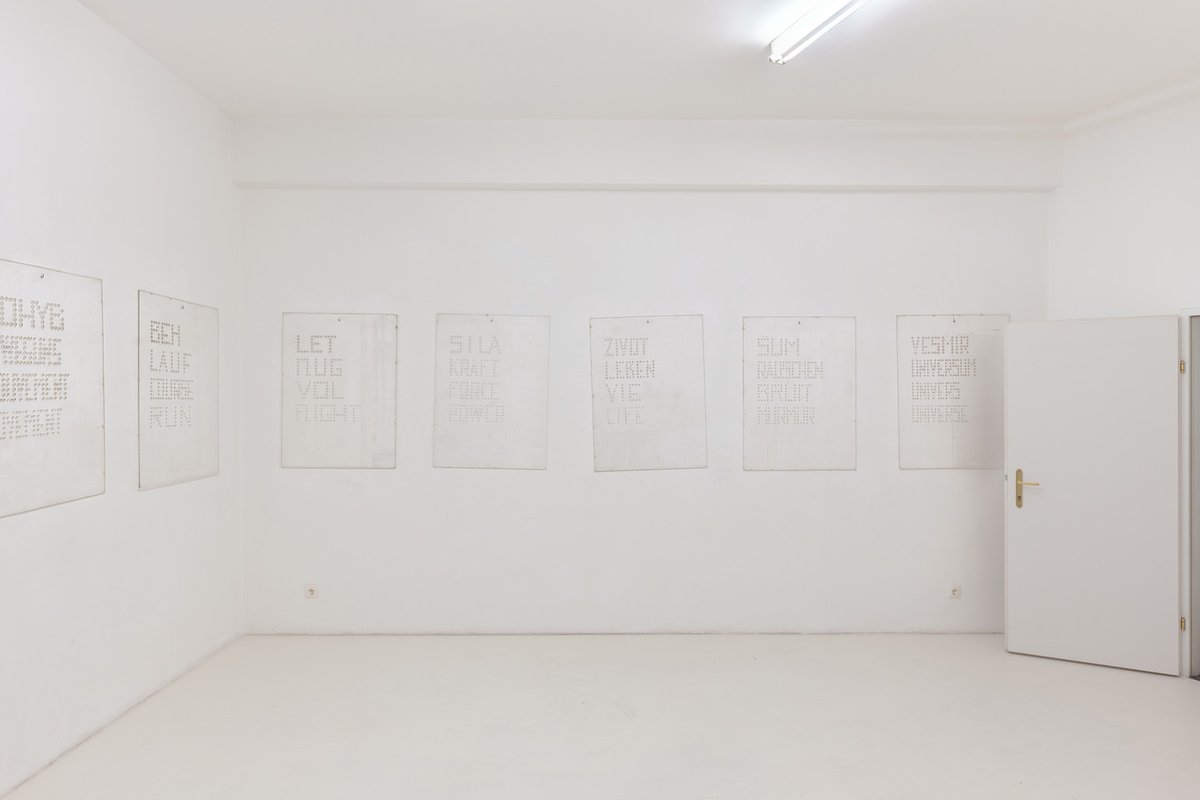
Stano Filko
Untitled, 1970
Perforation, plexiglass, 10 pieces
Each 100 × 75 cm

Stano Filko
Untitled, 1970
Perforation, plexiglass, 10 pieces
Each 100 × 75 cm
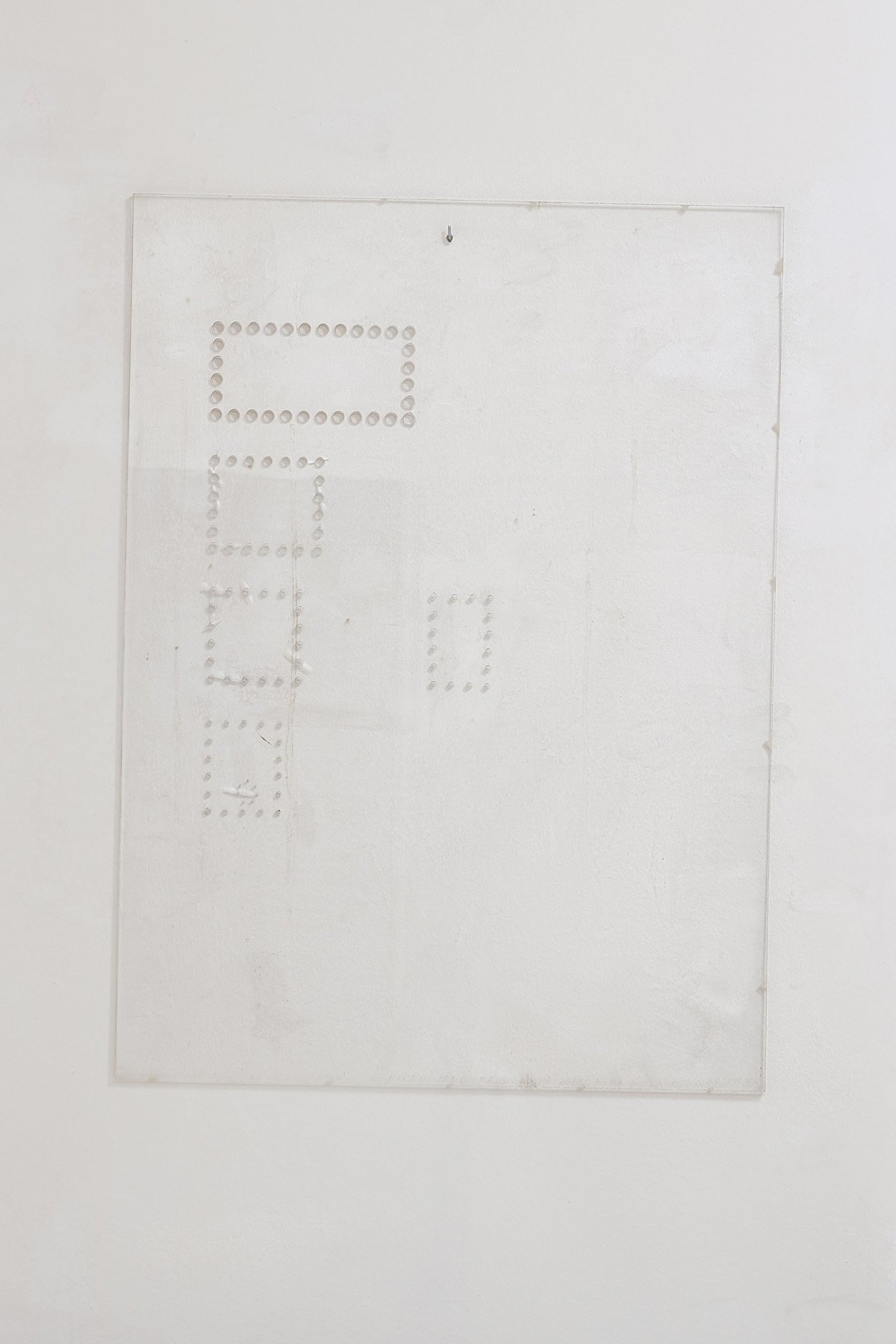
Stano Filko
Untitled, 1970
Perforation, plexiglass, 10 pieces
Each 100 × 75 cm
Detail view
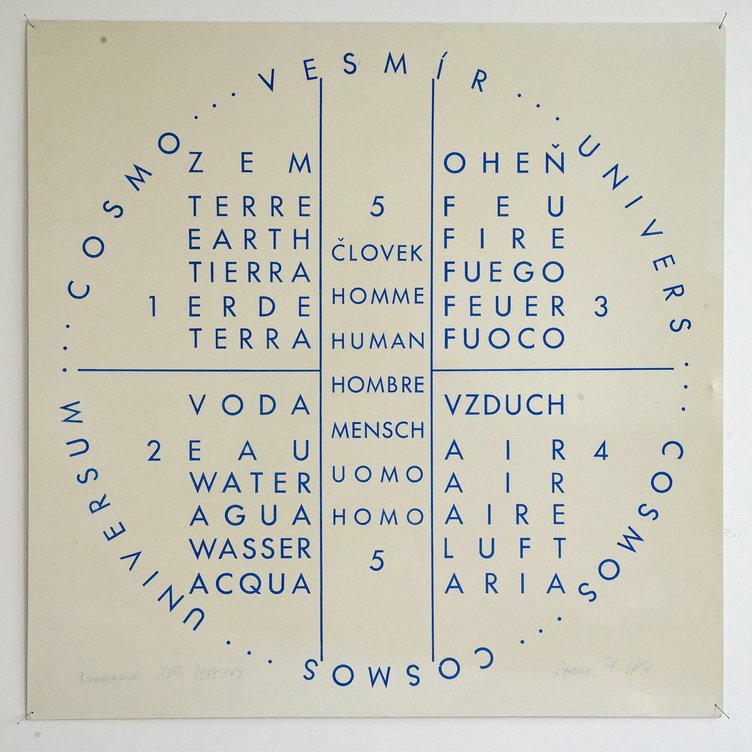
Stano Filko
Cosmos. Associations XVII., 1970
Serigraphy and offset print on PVC and paper
54.2 × 54.2 cm
featuring cross-references to (in alphabetical order) Dante Alighieri, Guillaume Apollinaire, Michael Asher, John Baldessari, Iain Ball, Alfred H. Barr, Ricardo Basbaum, Dimitrije Bašičević aka Mangelos, Bauhaus, Erick Beltrán, Anna-Sophie Berger, Joseph Beuys, Helena Blavatsky, Benjamin Bratton, Stanley Brouwn, Giordano Bruno, André Cadere, Cornelius Cardew, Maurizio Cattelan, Leonardo da Vinci, John Dee, Jacques Derrida, Ferdinand de Saussure, Marcel Duchamp, Albrecht Dürer, Noa Eshkol, Hans-Peter Feldmann, León Ferrari, Robert Fludd, Sigmund Freud, Yona Friedman, Katharina Fritsch, Buckminster Fuller, Gego, Jef Geys, Johann Wolfgang Goethe, Dan Graham, Georg Wilhelm Friedrich Hegel, Camille Henrot, Joey Holder, Georgiana Houghton, Johannes Itten, Donald Judd, Carl Gustav Jung, Fritz Kahn, Friedrich Kiesler, Athanasius Kircher, Yves Klein, Hilma af Klimt, Hilary Koob-Sassen, Joseph Kosuth, Heinrich Khunrath, Emma Kunz, Rudolf Laban, Jacques Lacan, Paul Laffoley, Sol LeWitt, Ramon Llull, Isaac Luria, Kazimir Malevich, Piero Manzoni, Michael Meier, Robert Morris, Bruce Nauman, Isaac Newton, Noigandres, Trevor Paglen, Cedric Price, Jan Evangelista Purkyně, Matt Mullican, Steven Parrino, Georges Perec, Lia Perjovschi, Charles Sanders Peirce, Raymond Queneau, Robert Rauschenberg, Patricia Reed, Ad Reinhardt, François Roche, Robert Ryman, Tomás Saraceno, Kurt Schwitters, Charles Stankievech, Rudolf Steiner, Atsuko Tanaka, Vladimir Tatlin, Keith Tilford, Johannes Thölde (aka Basil Valentin), Niele Toroni, Suzanne Treister, Aby Warburg, Stephen Willats, David Lewis-Williams, Ludwig Wittgenstein, Cerith Wyn Evans, Iannis Xenakis, Fernando Zalamea, and many others.
According to etymonline, a diagram (1610s, but as a way of depiction, a picto- ideographic system, known thousands of years earlier) is ‘an illustrative figure giving the outlines or general scheme of the object’; is ‘a drawing for the purpose of demonstrating the properties of a figure’; from French diagramme, from Latin diagramma ‘a scale, a musical scale,’ from Greek diágramma (διάγραμμα) ‘geometric figure, that which is marked out by lines,’ from diagraphein ‘mark out by lines, delineate,’ from dia ‘across, through’ + graphein ‘write, mark, draw.’ In Latin usage, figura takes the place of the Greek schema. While figura inhabited dynamic features (transferred to discourse on fleshiness as well) schema was made static (kept in the realm of depiction). Both figura and schema are related to aspects of model (…top models…).
According to Stanford Encyclopaedia of Philosophy, a diagram is ‘a drawing for the purpose of demonstrating the properties of a figure’ which is retrospective(consolidates and verifies what already is), explores—reaches (valid relation, analogy, synonym, metonymy, homology, interaction… or even, negatively, paralogism and oxymoron) what was not seen and generates the ‘third’ and infinite future meanings or even initiates up-coming processes of thinking, creation = it works as a tabula of prospection.
Diagrams are two- or three-dimensional—with unlimited possibilities of further generative linking (especially when digital). Diagrams embrace both qualitative and quantitative terms. Synonyms for diagram are graph, chart, map, tableau, table or board, sheet, plot, engineered blueprint… Diagram is a visual information device or axonometric display which relates primarily to the distribution of abstract matter in a particular format and structure with a high economizing, economical factor, with the potential to give easy access to very large territories of contingencies at once. Diagram includes both ‘logos’ and ‘nomos’. Schematics and metastaticity of diagramming reveal, create and expose relational patterns and carry comparative ability of cause and effect. The uniqueness of the diagram is the aspect of visualization where many items displayed in bonds frontally (at once) are not able to be communicated ~ understood via other explicit languages. It might be the value of an abstraction of ‘truth’ of the highest significance. Connecting lines of the diagram are not static but motivate mutual, ambidextrous, duplex readings. There are internal diagrams (cognitive schemes of sensory perception→hierarchical abstraction→analogical matching [mnemonic comparison…]and→conceptual integration or, in other words, blending); and external diagrams (physical post-products of the agency of conceptual blending). The second diagrammatic boom after the enlightenment was produced by the programming architecture of the digital realm, 3D-modelling and other related computer languages in the era of ‘information- or knowledge-societies’ (as conceived by Austrian- American economist Fritz Machlup, in The Production and Distribution of Knowledge in the United States,Princeton University Press, 1962). Through mobile-technology (‘digital citizenship’, termed by American political scientist Karen Mossberger, in Digital Citizenship—The Internet, Society, and Participation, MIT Press, 2007) the dominance in terms of interpersonal and other communication and the rise of knowledge-production-distribution, the ‘cellular, nodal organizational structures’ (which is a diagrammatic form of reading-writing and discursivity) gained extreme prominence.
These brief descriptions are meant to provide us with certain ‘pontis asinorum’ to reading the work of Stano Filko. The proposition here is—to understand Filko via / as a diagram.
It is impossible to do an exhibition OFStano Filko (1937-2015) anymore—without him. His approach of positioning himself in given in-situ situations was always total / the absolute ‘ego’(-centricity). Filko literally colonized the whole environment of his appearance in massively reactive improvisational deployment every time.
But still, we can do an exhibition ABOUTStano Filko, trying to pronounce his speculations (in an accessible way) without manipulating his own thoughts (speaking ABOUT his‘words’, but not speaking our‘words’ THROUGH him) ourselves. Filko left us a sufficient sum of coordinates for doing so. Stano used to claim that “a word (both written or spoken)is the achievement” (also in his “text-art”). He was right, because for e.g. when someone (the host) just tells us to sit down we (good guests, with spontaneous acceptance) sit down. This exhibition is concentrated on attentive research and consequent operation with these instructions. Filko is our symposiarch (host). We are all symposiasts (guests). We do not ‘play’ Filko. We do not (spatially) imagine what he (permanently interested in any new-media and emerging trends) might do now (with possibilities of holographic projections, 3D modelling and printing, AI and robotics…). We are trying to test how we read / how we can (how we will be able to) read Stano Filko in recent (and future) conditions.
The project MULTIMODAL GOOGLIFICATION OF COSMOLOGY-ORIENTED DIAGRAMMATIC EXPERIMENTATIONS OF STANO FILKO demonstrates the subjective system-directed morphology of this truly cutting-edge Slovakian artist of radical Conceptualism—both in intellectual, cultural and geopolitical territory (former East, former West and outer space) and time (from the profane deep past to today; and general relativity conflicting with quantum mechanics, and thermal time)—in all possible directions, correlations. We operate here beyond standard dichotomous divisions. ‘Googlification’ is a substitute pseudo-term for the contextualization of circumstances of the 21stcentury—to see (the documents of) the Word of Filko in the World of Now.Stano’s work was always fluently contemporary and will stay contemporary. This (rather associativethan descriptive—there is no aspiration for any ‘exegesis’) concept (following Filko’s autonomous readings) uses examples of religious practices, cults, myths, hermeticism, magic(k)s, alchemy, anthropology, sociology, media-communication, architecture, design and urban planning, philosophy, politics, computation- and computer-, neuro-, cognitive- and other sciences, technology and arts (of course) = multimodalityof media, methods, strategies and tactics, world-views, forms, meanings and values—as consequently used in cognitive, expressive / artistic~social (input/output) semiotics and semantics, language of Filko. Association(= ‘to unite with’) embraces proclamation of de facto nexuses; joints we are planning (or consciously desire; concepts and projects) to construct; or non-existent links we just imagine, feel or ‘hallucinate’ (on an entoptic level; prospects). All three factual and fictitious stages Filko manifested as one: e.g. the sketch for utopian architectural block is a work of art per se. Filko presented his synaesthetic system as a compact cosmo-logical (universal, supra-planetary order); eco-logical (maintenance of earthly living space); and onto-logical (meaning of the life of ‘self’) philosophy.
Stano Filko’s diagrammatic approach accelerated in the early 1990s out of a need to economize. The reason was not imminent in the sense of global data-overload but his own age. Right after his return to Czechoslovakia (“Slovakoczechia” in his words) after a decade in New York, he started the process of self-museologization ≈ the strategy of preserving a personal future (of his art), which had very sharp managerial traits. His intention was total clarity from critical logics(the past of his works) to guiding logistics(the determination of future reading of his works, from a ‘postmodern’ to a ‘postmortem’). He wanted us to read his art in a certain way, so we should or even have to follow him.
This is a simplified transcription (excerpt) of his 12-level diagram, 2006 (perhaps the most elaborate version). Filko started with 3 layers (red-blue-white), followed by 7 (as in Hindu, Persian, Kadosh rites and Nordic mythologies), 10 (as in Kabbalistic Tree of Life) and planned to extend his ‘modus operandi’ to 18:
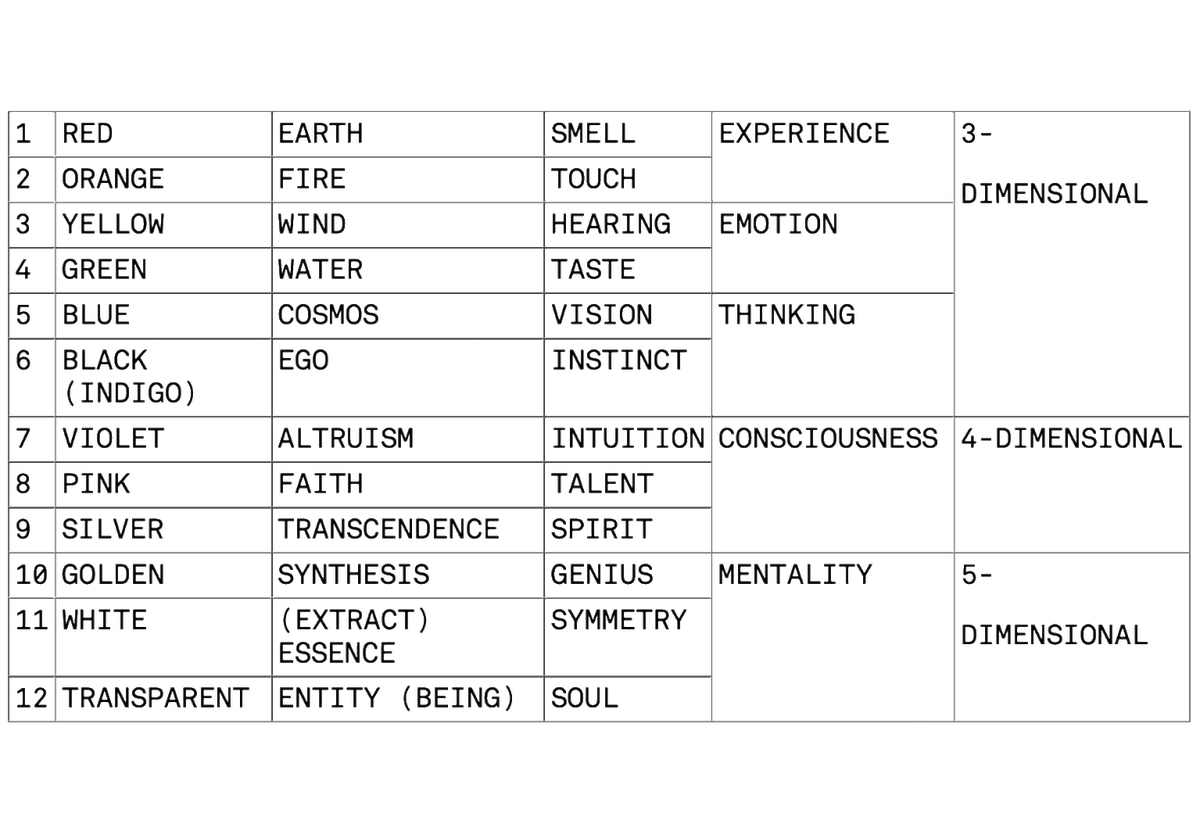
There is an oscillation, dialogue, repetition, intertwining between (apparently) antagonistic fields as described in the (already classical) term ‘epistemological anarchism’ of Austrian-American scientific philosopher Paul Feyerabend who claims (in his Against Method, New Left Books, 1975) “because there is no fixed scientific method, it is best to have an ‘anything goes’ attitude toward methodologies”; he adds “it is not possible to come up with an unambiguous way to distinguish science from religion, magic or mythology”. The nature of Filko’s thinking and its declaration was similar to Feyerabend. We can, or must, read Filko from departures of numerous disciplines (and world-views) inclusively.
MULTIMODAL GOOGLIFICATION OF COSMOLOGY-ORIENTED DIAGRAMMATIC EXPERIMENTATIONS OF STANO FILKO is a selection and installation of his works according to the readability of certain spectra of phenomenology (or thesaurusof objects, subjects, meanings and hierarchical positioning / intertwining) of his elementary method/s without trying to mimetically reproduce his mode of “installation par excellence”. This exhibition is more analytical than synthetic. Even in a reductively modest manner, we provide adequate chronological examples of Filko’s works. Despite there being chronological examples, the spatial arrangement of artifacts here is not linear but distributed (in the sense of the network) according to the sub-, meta-, hyper-, para-phenomenological system of his logics. ‘Chronos’ in Filko’s art is precarious—his complex self-museologisation also included re-dating (following his own bio-onto-philosophical milestones) and other interventions and innovations of his past works. This means it is highly recommended to revisit most of his works from manifold angles of temporality. To googlify Filko’s specific method of multimodal reasoning of his subjective cosmology means to articulate the rich scale of background influences, hybrid foundations (different types of depiction, modelling of the same thing and everything) of his creative action of true syncretic, ecumenical, we might say ‘Hellenistic’, interdisciplinary synthetic nature, as well as—to fix him as an unbreakable part of the (retro_spective←/→pro_spective) ‘internet of (every-)thing/s’ at large for good. In Filko’s all-media case—e.g. the ladder (steps of chakras: focal points, monades, Sephirots, nodes… terrestrial beings ascending to the divine realm, between Earth and Sky, matter and spirit, the physical and metaphysical worlds) is equivalent to his desire for and belief in the contingent growth and consequent reincarnation (with a vision of Buddhist-like dehumanization →dematerialization = the highest position [desired goal] of transparency in his color-coding system)—the only ‘entrance’ to the singular ‘henosis’ (= ‘becoming one’). He does not show simply an analysis of some ‘status quo’ but draws an ersatz line of future (nirvanic, transparent = trans-figurational) developments.
This ex_hibition (or ex_ploration) is a speculative diagram—a ‘psychogeographical’ situation itself. As lines of diagrams (mostly) do not exist in ‘physical’ reality (only certain invisible semantic or energetic emanations) we do not draw them in the space (violently attaching them to Stano’s works) but allow them to be articulated through a series of talks and walks planned during the course of this exhibition. Each elementis polysemic. Particular fragmental semes of an element are connected with particular fragmental semes of another element on a metonymic basis. There are several variants of ‘tour’ possible: the first according to pictorial (formal, object, subject) elements and the second according to color-coding concert (as well as many other possibilities). However, one is free to float through the show without any texts and maps, following only one’s own instincts and intuitions (which play a main role in Filko’s cosmology), mirroring diagrams familiar to her / himself (might be appearing from the background of e.g. corporate management).
Filko’s works are accompanied by three (flat-) screenings, appendixes follow:
the #first(ground-floor) exposes the flow of cross-references and is a continuation of the curatorial statement / essay in images;
the #second(upper floor, room 2) presents Filko’s (already empty) house-studio-archive in Bratislava (his house was a fractally generating magnum opus of diagramming itself—the diagram of diagrams) / the #third(upper floor, room 2) is a rare document of a visit at this house (2003) by phenomenal Czech curator and theorist Jiří Ševčík, Norwegian artist Jesper Alvaer, and Boris Ondreička (curator of this show).
The ground-floor #first(flat-) screening is a vast diagrammatic image archive. It contains a variety of disciplinary diagrams familiar to the professions of particular visitors, this familiarity allowing a much closer reading of Filko. To understand Stano’s language (to be able to successfully follow his instructions), we need to get to know the basics of the existing diverse language fragments (presented here in a panoptical ‘hors d´oeuvre’) he mixes into a kind of subjective ‘esperanto’ or ‘lingua franca’ = ‘lingua Filka’. This hermeneutical, ‘mnemonic / epistemo-anarchic’ flux of slides show the formal, explicit visual similarity between types of diagrams used in completely diverse fields, but they are analogically or even identically conceived and used (here and there ‘non plus ultra’) also in the construction of hierarchies (or polarities) of meanings—as identified in works of Stano Filko. There are no names and ages or disciplinary affiliations of any cross-referential image shown in the frame of the #firstscreen because we want to keep the associativemechanism of connecting Stano’s practices presented in this exhibition (or even to motivate visitor’s cognitive system at large) open. We believe that such an interpretational openness can get one (individually) closer to understanding Filko. An ambition of understanding him is not a case of any temporary course, but a long-term process.
Organization and orientation are means of order against chaos (massa confusa), an order of understanding, reading, behavior, living. Organization and orientation, navigation are means of control, power, safety, peace and tyranny as well, establishing various regulatory and repressive systems. There are no borders between totality, transcendence and oppression (as described by Emmanuel Levinas, in Totality and Infinity: An Essay on Exteriority, 1961, Duquesne University, 1969; and others). Don’t feel oppressed but inspired!
This is a basic access to the ‘didactica magna’ of Filko’s full aggregate. Functions of diagram (diagrams are poly-directional) are to answer questions ‘where we are’ and/or ‘how to get where we want to go to’ or ‘where we want to lead others to’ —in this case, ‘where Stano Filko wants to take us’.
Boris Ondreička (1969) is an artist, author and curator of TBA21 based in Bratislava, SK, Vienna, AT and Prague, CZ. In 1997, Filko and Ondreička established an art meta-entity called FILKONDREICKA (for the eponymous project in the frame of 60/90exhibition of SCCA, Bratislava, SK, 1998). In the following years they created several sizeable projects including PRAHat Museum of Vojtech Löffler in Košice, SK, 2000, and Quadrophonia / Model of the World for the Czechoslovak pavilion at the Venice Biennale, IT, 2005 (together with Ján Mančuška and Marek Pokorný). Since then, for almost a decade, Ondreička has been facilitating his work in the global institutional context of art. Together with Vít Havránek he curated his largest project —Up 300000 km/s, 2005. Together with Fedor Blaščák, he co-curated the only retrospective of Miloš Laky, 2010, which also included a spacious excursion into White Space in White Space—both taking place in tranzit workshops in Bratislava, SK. With Vít Havránek, he designed and installed the largest presentation to date of White Space in White Spacein Meštrović Pavilion in Zagreb as a part of the exhibition My sweet little lamb (Everything we see could also be otherwise)of Kontakt Collection, curated by WHW, 2017.